History [ ]
Originally, Star Trek was a product of Desilu Studios as created by Gene Roddenberry in a first draft series proposal " Star Trek is... ", dated 11 March 1964 .
Beginning with a single pilot episode, " The Cage ", filmed in 1964, Star Trek was not placed on the schedule of the NBC network until a second pilot episode, " Where No Man Has Gone Before ", was produced in 1965 .
Star Trek officially went into production on April 21, 1966 and ran for three seasons until it was canceled in 1969 . Four years later, the series returned to NBC as a Saturday morning animated series which ran from 1973 to 1974 .
No new production of Star Trek took place until 1979 , when Star Trek: The Motion Picture took the franchise into feature films , which have continued to be produced periodically since. Star Trek did not return to television until 1987 with the debut of Star Trek: The Next Generation .
Following three more spin-off productions, the 2005 – 2006 TV season was the first since 1987 without a new Star Trek series being broadcast, though all series remain in syndication.
As a result of a 2005 split between the former Viacom and CBS , Star Trek television productions fell under the umbrella of CBS Studios . During this period, films continued to be produced and distributed by Paramount Pictures under a licensing agreement. A thirteenth film was released in 2016 . CBS and Viacom were reunited and merged under the name ViacomCBS in late 2019 , reuniting the film and television branches of Star Trek . In 2022 ViacomCBS rebranded itself as Paramount Global , or simply Paramount.
After 12 years off the air, the franchise returned to the airwaves with its first streaming series, Star Trek: Discovery , which premiered in the fall of 2017 . This also saw the franchise expand into companion series, like the aftershow After Trek , which premiered right after the Discovery .
Currently, licensees of Star Trek products ( reference works , novels and collectibles ) include Art Asylum toys, Pocket Books , and IDW Publishing . Older licenses for previously produced material belong to numerous companies.

Conception and setting [ ]
"Star Trek was an attempt to say that humanity will reach maturity and wisdom on the day that it begins not just to tolerate, but take a special delight in differences in ideas and differences in life forms."
"We believed that the often ridiculed mass audience is sick of this world's petty nationalism and all its old ways and old hatreds... and that people are not only willing but anxious to think beyond those petty beliefs that have for so long have kept mankind divided."
– Gene Roddenberry
The stories in Star Trek mostly revolve around the experiences and adventures of the Humans and aliens who serve under Starfleet Command , the space-borne peacekeeping, exploratory, and humanitarian armada of the United Federation of Planets .
Many of the conflicts and political dimensions of Star Trek are allegories of contemporary cultural realities. Star Trek: The Original Series addressed social-political issues of the 1960s, just as later spin-offs have confronted issues of their respective decades. [1] Issues depicted in the various series include war and peace , personal loyalty, authoritarianism, imperialism, economics, racism , religion , human rights , sexism , and the role of technology . [2]
Roddenberry intended the show to have a progressive political agenda reflective of the emerging counter-culture and the civil rights movement of the 1960s, [3] though he was not fully forthcoming to the networks about this. He wanted Star Trek to show a future of what humanity might evolve to become, if it would learn from the lessons of the past, most specifically by ending violence. An extreme example is the alien race known as the Vulcans , who suffered a violent history but learned to finally achieve peace by suppressing their emotions and by adopting the guiding principles of logic . Roddenberry also placed great emphasis on an anti-war message in Star Trek , depicting the United Federation of Planets, a vast interstellar alliance founded on the enlightened principles of liberty , equality , justice, progress, and peaceful co-existence, as an idealistic version of the United Nations . [4] (X) His efforts were opposed by the network because of concerns over marketability; as they opposed Roddenberry's insistence that the USS Enterprise have a racially diverse crew.
Production history [ ]
The original series [ ], spin-off series [ ].
Star Trek films
- Paramount, 1979–1991
- Producers: Gene Roddenberry, Robert Sallin , Harve Bennett , Steven-Charles Jaffe , Ralph Winter
- Directors: Robert Wise , Nicholas Meyer , Leonard Nimoy , William Shatner
- Paramount, 1994–2002
- Producers: Rick Berman
- Directors: David Carson , Jonathan Frakes , Stuart Baird
- Paramount, 2009–2016
- Producers: J.J. Abrams , Damon Lindelof
- Directors: J.J. Abrams, Justin Lin
- CBS Television Studios/Paramount+
Aftershows [ ]
- CBS Television Studios/CBS All Access, 2017–2018
The Ready Room
- CBS Television Studios/ Facebook Live , 2019–
Podcasts [ ]
Engage: The Official Star Trek Podcast
- CBS Television Studios, 2016–2018
Star Trek: The Pod Directive
- CBS Television Studios, 2020–
Unproduced projects [ ]
- See: Undeveloped Star Trek projects
Overseas adaptations [ ]
Star Trek has been aired around the world throughout its run of television and film series. Most often, it has been dubbed into the native language of the larger population countries in question, while other, smaller population countries subtitled the productions and kept the original language tracks. During this time, the titles, characters, and so forth have been changed as they move from language to language.
Licensed media [ ]
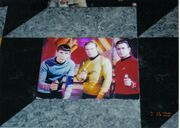
Floor tile in the NBC gift shop at 30 Rock
- Blu-ray Discs
- Collectibles
- Reference works
Related topics [ ]
See also [ ].
- Star Trek parodies and pop culture references
- Star Trek documentaries and specials
- Star Trek corporate history
- Star Trek birthdays
- Star Trek deaths
- TOS directors
- TAS directors
- TNG directors
- DS9 directors
- VOY directors
- ENT directors
- DIS directors
- ST directors
- PIC directors
- LD directors
- PRO directors
- Film directors
- Cast members who directed
- Guest performers
- Regular cast
- Performers considered for roles
- Performers whose scenes were cut
- Recurring characters
- Star Trek auctions
- Star Trek fonts
Other topics [ ]
- Bottle show
- Design patents filed for the Star Trek franchise
- I'm a doctor, not a...
- Shakespeare and Star Trek
External links [ ]
- StarTrek.com , the official Star Trek website
- The official Star Trek YouTube channel at YouTube
- Star Trek at Wikipedia
- Star Trek spin-off fiction at Wikipedia
- Star Trek at BBC.co.uk
- 3 Ancient humanoid
Things you buy through our links may earn Vox Media a commission.
A Beginner’s Guide to the Star Trek Universe

Star Trek is a behemoth of a franchise. Running over 50 years, it has had five live-action series, one animated series, several films, comics, novelizations, and an extremely obsessive fandom I’ve counted myself a part of since childhood. I understand how Star Trek can seem labyrinthine, too dense for new fans to find their way in. But it’s very well worth it. This guide is a window into the Star Trek franchise, meant to introduce it those who have scant knowledge of its intricacies. At its best, Star Trek is a potently political, unabashedly philosophical, powerfully diverse, empathetic, and supremely well-crafted series that uses its hard science-fiction trappings to speak to our times. With Star Trek: Discovery bringing the franchise back to television after a 12-year absence, now is the best time to see why Star Trek has endured since The Original Series first aired in 1966.
There are a few major concepts to understand before venturing into the realm of Star Trek :
1. How Star Trek imagines the future of humanity and Earth itself. To understand the allure of Star Trek, it’s necessary to understand the ways its creator Gene Roddenberry and later writers conceived of humanity’s future. While Earth is, for all intents and purposes, a utopia during the time of the various Star Trek series, it took a long, bloody road to get there. 21st-century Earth was embroiled in many conflicts, including what would become known as World War III (2024–2053), which was sparked by a litany of issues, including anger over genetic manipulation and the Eugenics Wars. Governments fell. Major cities were destroyed. The loss of life hovered around 600 million. Ten years after the end of the war, First Contact was made with the Vulcans (a rigid, highly logical species that count fan-favorite character Spock as a member), thanks to humanity building the first warp drive that allowed for space travel faster than the speed of light (this event is dramatized in the 1996 film Star Trek: First Contact ). The discovery of intelligent alien races forced humanity to get its act together. After further chaos and attempts to establish order, eventually the United Earth Government was established in 2150. By the early 22nd century, humanity was able to eliminate most, if not all, of the poverty, disease, hunger, and cruelty that has plagued us since our beginnings. Racism, sexism, and even money was a thing of the past. Humanity’s drive became a philosophy of betterment and exploration.
2. The Federation Founded in San Francisco in 2161 by four different species, including humanity and the Vulcans. To put it simply, the Federation is a republic composed of various planetary governments who have agreed to live semiautonomously under a central body that guides their primary goals: a grand sense of intellectual curiosity and peaceful exploration.
3. Starfleet Starfleet is the defense and deep-exploration service maintained by the Federation. They ferry ambassadors, participate in away missions, protect the peace, and establish new relations with various worlds when necessary. In essence, they’re the heart and soul of the Federation. They continue, to quote Captain James T. Kirk, the “dream that became reality and spread throughout the stars.”
Now let’s get to the fun stuff!
The Original Series (1966-1969)
Where to Watch: Hulu , Netflix , CBS All Access
Beginning in the 23rd Century, Star Trek: The Original Series adeptly blends sci-fi, adventure, philosophy, and a fierce dedication to diversity in order to tell the stories of the legendary crew of the USS Enterprise . I can’t say it better than Captain James T. Kirk (William Shatner) does in the opening credits: “Space: the final frontier. These are the voyages of the starship Enterprise . Its five-year mission: to explore strange new worlds, to seek out new life and new civilizations, to boldly go where no man has gone before.”
Important Cast Members
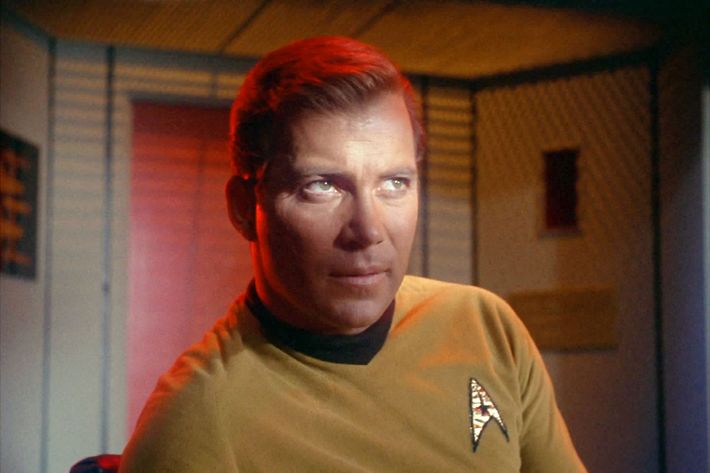
Star Trek at its heart is an ensemble with several important key members. There’s, of course, the adventurous, boldly physical, ladies man Captain James T. Kirk , whose swagger often masks his sincerity. My favorite by far is First Officer/Lieutenant Comander Spock (Leonard Nimoy), a half-Vulcan, half-human dedicated to logic and fond of the arts, battling his issues with being in the liminal space between two worlds. His friendship with Kirk is not only the backbone of The Original Series and its cinematic counterparts, but one of the definitive relationships of the entire franchise . There’s also the hilariously blunt Dr. McCoy (DeForest Kelley), the congenial chief engineer Scotty (James Doohan), and the revolutionary characters Uhura (Nichelle Nichols, who could count Martin Luther King Jr. as a fan), and dashing science officer Lieutenant Sulu (George Takei).
Gateway Episodes
Season 1, Episode 3, “Where No Man Has Gone Before” Despite being billed as the third episode of the series, it’s actually more of a pilot episode. (Well, technically the second pilot after the first one failed to convince execs of Star Trek ’s potential.) “Where No Man Has Gone Before” follows two crew members who develop godlike psychic abilities after the Enterprise attempts a mission at the edge of the galaxy. It’s full of action and towering emotional stakes, and it capably sketches the main characters.
Season 1, Episode 15, “Balance of Terror” Watching “Balance of Terror” demonstrates the depth and craft of Star Trek: The Original Series. It’s a taut and complex Cold War allegory that introduces the Romulans, the warlike cousins of the more scientifically minded Vulcans. After they arrive, Spock faces virulent bigotry from his peers on the Enterprise , who begin to see him as a threat. It’s a bracing and emotionally astute episode that sharpens the dynamics between its characters to create a provocative tale about the way prejudice blooms and corrupts.
Best Episodes
Season 1, Episode 22, “Space Seed” “Space Seed” introduces the ills from humanity’s past when the Enterprise stumbles upon an ancient ship that escaped 20th-century Earth during the Eugenics War. The passengers are genetically engineered humans who have been asleep for 200 years, but they awake still assured of their own superiority. The episode is notable for introducing Khan Noonien Singh (a decadently malevolent Ricardo Montalban), one of the definitive villains from the franchise, and science-fiction history.
Season 2, Episode 4, “Mirror, Mirror” Star Trek loves traversing to the mirror universe, where the characters turn into their darker, sometimes outright evil, counterparts. This is a gleeful, bracing episode that stands out for its use of Spock and finally giving Uhura a more active role.
Season 2, Episode 15, “The Trouble With Tribbles” If you’re in the mood for a more comedic episode, you can do no better than this unabashedly bonkers one.
What to Skip
Season one and season two are definitely The Original Series at its best (a few episodes, like “Mudd’s Women” and “Assignment: Earth”, deserve to be skipped.) Season three saw the television series get budget cuts, which definitely shows. But even at its worst, The Original Series has something to admire, whether it be the acting or a kernel of the plot.
TOS is a blissful, adventurous, and often exhilarating series. It broke new ground on subjects that other shows rarely ever delved into deeply — war, racism, the issues with eugenics. It’s also a beautiful portrait of the power of sci-fi when it is willing to display humanity reaching toward utopian ideals.
The Next Generation (1987–1994)
In the 24th century, nearly a century after the adventures of Kirk and Spock, a new crew boldly travels on the Enterprise , taking on even more harrowing journeys: exploring the galaxy, interacting with new cultures, and carrying out diplomatic missions that challenge their understanding of the universe and themselves. TNG also reinvents and fleshes out Klingon and Romulan culture, which provides some of the most bracing narratives of the series. Star Trek: The Next Generation is the platonic ideal of the Star Trek ethos — ensemble cast, proudly sincere, steadfastly philosophical, episodic in nature — perfecting what Roddenberry started in 1966. It’s also the best cast chemistry the franchise has ever seen, along with an excellent sense of pacing and action that is predicated on a superb use of suspense.
The minds behind TNG, including showrunner Rick Berman and Roddenberry himself, were wise not to just slightly update the archetypes that TOS created. Captain Jean-Luc Picard (a magnificent Patrick Stewart) is the ultimately European-inflected gentleman — stately, stiff posture, loving, blisteringly intelligent, concerned with the arts, steadfastly dedicated to upholding the tenets of the Federation. First Officer/Commander William T. Riker (Jonathan Frakes, who has directed countless Star Trek episodes and even a few of the films) is dashing, wry, a bit cocky, and undoubtedly has the most intense romantic history of anyone on the crew. Lieutenant Commander Data (Brent Spiner) is an android whose quest to become more human furthers Star Trek ’s interest in what it means to be a human, and the nature of family. Other important characters include: Deanna Troi (Marina Sirtis), a half-Betazoid, half-human counselor with telepathic abilities and an obsession with chocolate; Geordi La Forge (LeVar Burton), the chief engineer whose friendship with Data is one of my favorite aspects of the series; and Dr. Beverly Crusher (Gates McFadden), the chief medical officer, who has a history with Picard and a warmth I’ve always admired. (I don’t hold it against her that she just so happens to be the mother of the most annoying character in the series.)
Season 2, Episode 9, “The Measure of a Man” This is one of many heartbreaking episodes that involve Data’s quest to be seen as human, despite being an android. Picard must prove Data is legally a sentient being with all the freedoms and rights that entails, otherwise Data will be disassembled for study since he is the only one of his kind that his creator made (at least as far as Starfleet knows). Making the legal proceedings all the more impactful on an emotional level is the fact that Riker is forced to work on the opposing counsel. The pleasures of this show are truly endless, and Data’s arc provides Star Trek with one of its most moving portraits of what it means to be human.
Season 4, episode 5, “Remember Me” To best understand why TNG is the platonic ideal of Star Trek , all you have to do is experience the warmth and tenaciously protective bonds between the characters. “Remember Me” displays that superbly. This is also a great example of how TNG excelled at high-concept episodes that unfurl into something different, and stranger, as revelations come to light. This episode follows Dr. Beverly Crusher as she struggles with her fear over losing loved ones. This fear is magnified when beloved colleagues start disappearing on the ship, and only Beverly retains any memory of them.
Season 5, Episode 2, “Darmok” If you’re looking for an entry that showcases TNG ’s interest in the cerebral, look no further than “Darmok,” in which Captain Picard is stuck on a planet with an alien whose language he’s unable to discern. The chasm between them allows TNG to consider the power of language and connection.
Season 6, Episode 4, “Relics” This may be the best episode for viewers who are dipping into TNG after falling in love with TOS. Star Trek ’s canon is always in conversation with itself. Characters from older series make appearances elsewhere, shining a light on the surprising familial quality of the franchise. “Relics” is one of the best examples of this, with Scotty from TOS finding himself entangled with the crew of Picard’s Enterprise . “Relics” is a beautiful meditation on what happens to older generations when the universe has passed them by. Writer Ronald D. Moore (who has gone on to spearhead shows like Battlestar Galactica and Outlander ) uses the premise of Scotty’s surprising reemergence to celebrate the heart of the series, while also charting the differences between TNG and its predecessor.
Season 3, Episode 26, and Season 4, Episode 1, “Best of Both Worlds Part I and II” I won’t say much about “Best of Both Worlds Part I and II” since the twists these episodes take are simply astounding and quite an emotional gut punch. The episode furthers the characterization of Riker, whose decision to remain first officer rather than captain his own ship gets scrutinized when a young upstart is brought aboard to aid in the Borg crisis. The Borg, introduced in TNG, become one of the definitive villains of Star Trek and they are at their best here, when their hive-mind nature and ability to assimilate other species takes on terrifying new dimensions.
Season 4, Episode 21, “The Drumhead” Star Trek ’s political intrigue is at its best when it subverts our expectations of what heroism and villainy looks like. Perhaps this is why “The Drumhead” is by far one of my favorite episodes. It follows a potential conspiracy that is uncovered on the Enterprise when a Klingon exchange officer is found to have given important schematics of the Enterprise to the warlike Romulans. What starts out as a simple investigation gives way to bigotry and paranoia when Admiral Norah Satie (played with steely grace by classic Hollywood actress Jean Simmons) is brought aboard by Starfleet top brass to investigate.
Season 4, Episode 24, “Mind’s Eye” “Mind’s Eye” is an exhilarating tale of mind control and covert operations that develops Geordi and shows just how dastardly the Romulans can be.
Season 5, episode 25, “The Inner Light” An iconic and beautifully rendered portrait of community and loss that requires little knowledge of the series to be moved by.
Season 7, Episode 11, “Parallels” “Parallels” grants Worf some development and focus (finally!) in a fun episode in which he notices changes in his friends and other crew members he can’t quite explain. There are just so many great TNG episodes. Dive into it and enjoy the ride.
The Next Generation has a notoriously uneven first season. But don’t skip the pilot episode or episode 22, “Skin of Evil,” which has a pivotal character loss that reverberates through the rest of the series. TNG hits its stride in season three and remains consistent until the very end of its seven-season run, perfecting both its episodic structure, stand-alone episodes, and the franchise’s love of a good two-parter whose cliffhangers hit like a sucker punch. It also undoubtedly has the best series finale in the franchise, “All Good Things.”
The Next Generation does not get the love it deserves despite being the most successful Star Trek series during its airing. It’s easy to look upon its episodic nature and lack of bold visual stylistic qualities (at least by today’s standards) and see it as a relic from a simpler time in TV. But that would be a mistake. TNG has a cast that exhibits the emotional qualities of Star Trek better than any of the other series. There’s a camaraderie between them that makes these people easy to love and admire. A 2015 Wired article explains why former president Barack Obama considers himself as a Trekkie : “As Obama sees it, approaching the unknown with resourcefulness and discipline and optimism is what made Star Trek so good.” These qualities are more true of TNG than any other series.
Deep Space Nine (1993-1999)
Star Trek: Deep Space Nine is my favorite series from the franchise . It’s also the antithesis of The Next Generation. If TNG represents the glory of utopia and Starfleet’s upper class, DS9 depicts the high price of attaining peace and the fraught nature of taking an assignment no one else wants. Star Trek ’s first black lead, Benjamin Sisko (an intense and commanding Avery Brooks), who becomes a captain in season three, is assigned to command DS9 and aid the Bajorans — a people who are finally free of brutal Cardassian control after a 50-year occupation — in joining the Federation. DS9, which takes place in the 24th century, during the same time period as TNG , disregards a few pivotal aspects of other series: There’s no main starship — the setting is actually a space station near a wormhole; while Roddenberry gave his blessing for the series shortly before he died, showrunners Ira Steven Behr and Michael Piller (who was on until 1995) disregarded his mandate that crew members couldn’t have long-standing conflicts. It’s also the first time Star Trek has larger arcs instead of an episodic nature.
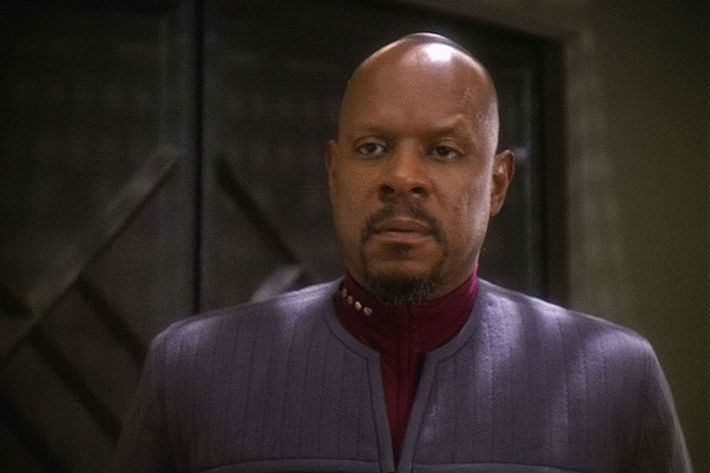
Benjamin Sisko is a grieving widow and single father whose wife was killed in the Battle of Wolf 359, making him openly antagonistic toward Captain Picard (Patrick Stewart, whose appearance in DS9 ’s pilot is meant to bridge TNG with DS9 ) of the USS Enterprise during the only time they meet in the premiere. (For novices coming in with no knowledge of Star Trek , I don’t want to spoil the particulars, but Picard had a hand in the events that led to Sisko’s wife’s death.) It’s fascinating to chart the difference between the morally grey, bombastic, yet emotionally raw Sisko and the gentlemanly Picard. Sisko has a down-home, almost-working-class sensibility. He loves cooking (his father is a New Orleans chef) and baseball. He’s a man who wears his emotions on his sleeve and has an extremely close relationship with his crew. There’s a tenderness to Sisko, which is rendered in his relationship with his son, Jake (Cirroc Lofton). Sisko’s closest friend is Jadzia Dax (a wondrous Terry Farrell), a science officer and member of the Trill , which means she is host to a long-living symbiont that has had seven previous lives. She is symbiotically joined with this creature, giving her the memories and experiences of these seven different lives. Next to Jadzia, one of the most important relationships Sisko has is with his first officer, the Bajoran Kira Nerys (Nana Visitor). To put it simply, Kira is a badass. Characters like Jadzia and Kira prove DS9 has the best-written female characters from the franchise.
The chief of security, Odo (René Auberjonois), is a shape-shifter who assumes the figure of a humanoid male and desperately yearns to find out about his origins. Quark (Armin Shimerman), a Ferengi bar owner, at first glance seems like merely a greedy and underhanded figure. But he shows a moral code on occasion and brings the show a lot of its humor (and moral complexity). The ever-dashing Alexander Siddig plays chief medical officer Julian Bashir . A bit tactless and self-obsessed, Julian actually proves to add a great emotional dimension to the series. TNG cast members Miles O’Brien (Colm Meaney) as the chief engineer officer and Worf (Michael Dorn), as strategic operations officer, join the cast as well, getting far more development than they had previously. DS9 makes great use of its supporting cast, with highlights being: Garak (a powerhouse Andrew J. Robinson) a former Cardassian spy who is on the station to avoid prosecution masquerading as a tailor; Dukat (Marc Alaimo), a brutal and seasoned Cardassian military leader whose villainy is terrifying, thanks to his treatment of the Bajorans.
DS9 is a purely serialized show. Its arc and characters grow richer as the seasons continue. But it makes it difficult to suggest stand-alone episodes since they rely on an understanding on the interpersonal dynamics of the characters. The extended pilot episode, “Emissary Part I and Part II,” is definitely the best place to start. I’d also recommend the season-four premiere, “The Way of the Warrior.” It’s a two-part episode that introduces Worf joining the crew as Klingon antagonism accelerates. It may seem a bit too complex for those coming into the series for the first time, but Worf acts as a bridge between TNG and DS9 for those watching the series in order and looking for something to hold on to.
Season 4, Episode 3, “The Visitor” “The Visitor” centers on the relationship between Sisko and his son, Jake, in the wake of an accident that seemingly kills the captain. But Jake holds on to hope, dedicating his life to bringing his father back. With moving performances by Brooks and Tony Todd as an adult Jake, “The Visitor” cements DS9 as one of the most impactful portraits of black fatherhood in the history of TV.
Season 5, Episode 3, “Looking for par’Mach in All the Wrong Places” This episode turns the curious pairing of Quark and Worf into a hilarious and strangely romantic episode about their separate romantic foibles.
Season 5, Episode 6, “Trials and Tribble-ations” DS9 has a weight to it that can make it seem rather heartbreaking, but the writers weren’t afraid to have fun. The best example of this is undoubtedly “Trials and Tribble-ations,” which has the DS9 crew travel back in time to protect the timeline landing them on the Kirk-era USS Enterprise . It is a joyful ride watching DS9 go colorful and marvel at the legendary crew of TOS.
Season 5, Episode 22 “Children of Time” This is one of the episodes I’ve watched so much, I’ve nearly memorized it. The crew is heading home when Jadzia convinces Sisko to examine curious readings on a planet. Unfortunately, the ship crashes and the crew is faced with curious people on the planet — their own descendants. The episodes reaches a heartbreaking crescendo as it develops how far Odo would go for his unrequited love, Kira. (If you find this pairing as great as I do, season four’s “Crossfire” is also stellar.)
Season 6, Episode 13, “Far Beyond Our Stars” In this episode, Sisko has a vision from the Prophets that splits the episode in two parts — Sisko as captain on Deep Space Nine, and his visions of being a sci-fi writer in 1950s America who is writing a story about a captain on a space station named Benjamin Sisko. The pleasures of this episode are endless: getting to see the actors without their usual alien designs playing wildly different people; its exploration of race; the deftly layered narrative; and most important, the masterful acting by Avery Brooks, who also directs the hell out of the episode. It is by far one of the best episodes in all of Star Trek .
Season 6, Episode 19, “In the Pale Moonlight” No best-of- DS9 list would be complete without “In the Pale Moonlight.” The Federation is losing its war with the Dominion. In order to convince the Romulans to join their cause, Sisko enlists Garak, leading to harrowing consequences and an intense portrayal of just how far Sisko is willing to go in order to protect the Federation and those he loves.
Like TNG, DS9 is an immensely consistent series once it finds its balance. The first season is definitely a bit uneven, but given that DS9 has several dense arcs introduced in its first season, don’t skip “The Emissary” (pilot episode), “Battle Lines,” and “Duet.” DS9 can be binged from seasons two through six. Its final season lacks the typically fine-tuned narrative elegance of the previous seasons, but it is definitely worth the watch with episodes like “Chimera,” “Take Me Out to the Holo-Suite,” and “Extreme Measures” being highlights.
DS9 had an odd reputation while it aired for foregoing so much of what made Star Trek what it was. But DS9 proves how potent Star Trek can be today with its assured handling of grand arcs and stand-alone episodes, great acting and moving themes. It was a series unafraid to ask tough questions and provide tougher answers.
Voyager (1995-2001)
Star Trek: Voyager has all the makings of an amazing series that pushes the franchise in even more audacious territory in the wake of DS9, and also grants the franchise several new, radically different female characters in its most diverse outing . The USS Voyager crew, headed by the flinty-eyed Captain Kathryn Janeway (Kate Mulgrew), is flung 70,000 light years into the unexplored Delta Quadrant along with a vessel of Maquis terrorists. With 75 years of travel between them and home, and a hostile environment in which the Federation has no foothold, the Starfleet members are forced to join forces with the Maquis. Despite this stellar premise, Voyager is unfortunately weighed down by a reliance on cosmic reset buttons and poor characterization.
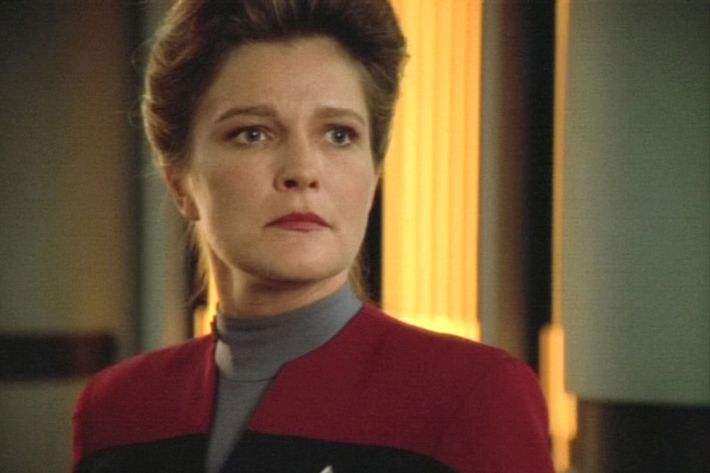
My greatest issue with Voyager is its characterizations. At first blush, Captain Kathryn Janeway seems to be a steely, by-the-book, scientifically minded leader. Unfortunately, she can come across as hypocritical — her characterization shifts depending on the needs of the plot. There’s her first officer, Chakotay (Robert Beltran), a former Maquis member, who becomes a loyal and cherished friend. B’Elanna Torres (Roxann Dawson), a half-Klingon, half-human, who proves to be a highly capable engineer battling the warring sides of her identity. In an interesting twist, the USS Voyager ’s chief medical officer, the Doctor (Robert Picardo), is a hologram after the medical staff is killed in the first episode. He’s a bit full of himself, extremely talkative, but a valued member who gains his own sense of identity as time goes on. But by far the most important character beyond the captain herself is Seven of Nine (Jeri Ryan), a Borg drone who joins the ship in season four and slowly reclaims her humanity.
Suggesting gateway episodes from Voyager is a bit tricky. The best episodes, while brilliant, don’t represent the series well due to its profoundly uneven writing. The best gateway into the series is its pilot, “The Caretaker,” which, despite a few nagging issues, otherwise wonderfully sets up what I believe to be one of the most fascinating beginnings in Star Trek history.
Season 4, Episodes 8 and 9, “Year in Hell Part I and II” These episodes depict the hellish, fraught, and harrowing dynamics you’d expect from Voyager ’s premise, pushing its characters to the brink. The timeline is altered by a man hoping to bring his wife back to life, with people and even whole planets being wiped from existence.
Season 4, Episode 23, “Living Witness” This episode depicts the Doctor brought back online after 700 years and looks at how the legend of USS Voyager ’s crew proves to be very different than the reality we’ve come to know.
Season 5, Episode 6, “Timeless” “Timeless” makes good use of Harry Kim (Garrett Wang), a Starfleet operations officer who typically was more of an annoyance. Harry makes a fatal miscalculation when the ship is testing out slipstream travel in hopes of getting home to Earth. With only Harry and Chakotay as survivors, they spend years trying to right this wrong.
Season 5, Episode 10, “Counterpoint” “Counterpoint” grants Captain Janeway a worthy adversary, as the crew navigates a sector with a militaristic, xenophobic culture that hates telepaths.
As I noted earlier, Voyager is very uneven with smatterings of great episodes nestled between frustrating ones that rely on too many leaps of logic. Seasons three through six definitely have highlights, so I’d recommend checking out the best episodes that I listed above and deciding if you like the characters enough to binge.
Voyager has become a beloved series thanks to its legion of female characters. But it demonstrates what happens when Star Trek skews a bit too conservative (narratively speaking), afraid to take the risks necessary to challenge our conception of its characters. Its uneven handling of tone, character, and narrative undercuts what could have been a truly bold series.
Enterprise (2001–2005)
Enterprise begins the unfortunate trend Star Trek has continued since, of looking backward instead of pushing the series forward in its timeline. It takes place roughly a century before TOS. This is the first crew of deep-space explorers on the Enterprise , headed by Captain Jonathan Archer (Scott Bakula of Quantum Leap fame), whose father designed the engine, as the narrative fleshes out corners of Starfleet’s early years.
Enterprise has three primary characters: the roguish and down-to-earth Captain Archer ; Vulcan High Command science officer T’Pol (Jolene Blalock) who forms a close bond with Archer; and chief engineer Charles “Trip” Tucker III (Connor Trinneer), who grows more assured as the series continues.
Season 1, Episode 1, “Broken Bow Part I and II” This is a good entry into understanding the modus operandi of Enterprise, although it does reflect how uneven the early seasons proved to be.
Season 1, Episode 7, “The Andorian Incident” By this point, as much as I find Vulcans fascinating, the franchise is a wee bit too obsessed with them. But “The Andorian Incident” shows how brutal and xenophobic they can be.
Season 3, Episode 10, “Similitude” Cloning is one of the themes in science fiction that can easily turn frightening and unsettling. “Similitude” questions the ethical problems with cloning as Trip nearly dies and a clone is created for the sole purpose of saving his life. The clone’s life span is only 15 days, causing an uneasiness among the crew that raises a good question: How far would you go to save a friend and colleague integral to your life?
Season 4, Episode 4, “Borderland” “Borderland” brings back Brent Spiner (who memorably played Data) as Dr. Arik Soong (the grandfather of the man who created Data), and turns its gaze to the Eugenics Wars. The following two episodes provide one of the best arcs in Enterprise. These episodes center around the mad-scientist archetype, leaning into the pulpy nature of Star Trek and providing a worthwhile window into the Eugenics Wars from a different angle.
Season 4, Episodes 18 and 19, “In a Mirror, Darkly Part I and Part II” These episodes hit a sweet spot for me. Exploring the mirror universe allows the writers and actors to have a lot of fun playing with the credits and canon. Enterprise twists humanity’s history in the mirror universe, revealing that we lean into our baser, more selfish instincts than create the utopian world that Star Trek represents in its main universe. So, basically the timeline we’re actually living in.
Enterprise takes a while to find its footing, which unfortunately doesn’t happen until its final season. I’d recommend watching the pilot and skipping to the fourth season, which is undeniably its best.
Star Trek: Enterprise is by far the most loathed series by long-term fans. It definitely has a lot of faults, including an odd relationship to canon, sometimes relying too heavily on winking toward TOS instead of being its own thing. But I don’t think it’s as terrible as people have been led to believe. Enterprise ’s failures — both narratively and in terms of gaining a foothold in the larger cultural imagination — represent not just its artistic issues, but how science fiction has changed so dramatically in recent decades. The potent philosophical and political interests of Star Trek — a series that finds pleasure in verbal dexterity and intellectual curiosity rather than the obviously beautiful, so-called cinematic trappings of modern TV’s Golden Age — means it doesn’t exactly fit into our times.
But so much can be learned from the entire Star Trek franchise . In my mind, Star Trek represents the beauty of science fiction when it asks us to better ourselves, to question our prejudices, to dream. It represents sci-fi at its most humane and powerful.
If you want further and more in-depth information this Star Trek wiki is very useful.
- vulture homepage lede
- star trek discovery
- star trek guide
- star trek beginner guide
- vulture guides
Most Viewed Stories
- Cinematrix No. 35: April 12, 2024
- Fallout Series-Premiere Recap: Orange Colored Sky
- American Horror Story: Delicate Recap: Brooklyn Witches
- Fallout Recap: Ain’t That a Kick in the Head
- Hollywood Is Doomed If There’s No Room for Megalopolis es
- Summer House Recap: Say Yeesh to the Dress
Editor’s Picks

Most Popular
What is your email.
This email will be used to sign into all New York sites. By submitting your email, you agree to our Terms and Privacy Policy and to receive email correspondence from us.
Sign In To Continue Reading
Create your free account.
Password must be at least 8 characters and contain:
- Lower case letters (a-z)
- Upper case letters (A-Z)
- Numbers (0-9)
- Special Characters (!@#$%^&*)
As part of your account, you’ll receive occasional updates and offers from New York , which you can opt out of anytime.
How to Watch Star Trek in Order: The Complete Series Timeline
The full star trek timeline, explained..

Ever since 1966’s premiere of the first episode of Star Trek: The Original Series, the entertainment world has never been the same. This franchise that has boldly gone where no property has gone before has captured the hearts and minds of millions around the world and has grown into a space-faring empire of sorts filled with multiple shows, feature length films, comics, merchandise, and so much more. That being said, the amount of Star Trek out in the world can make it tough to know exactly how to watch everything it offers in either chronological or release order so you don’t miss a thing. To help make things easier for you, we’ve created this guide to break down everything you need to know about engaging with this Star Trek journey.
It used to be a bit trickier to track down all the Star Trek shows and movies you’d need to watch to catch up, but Paramount+ has made it a whole lot easier as it has become the home of nearly all the past, present and future Star Trek entries.
So, without further ado, come with us into the final frontier and learn how you can become all caught up with the adventures of Kirk, Picard, Janeway, Sisko, Spock, Pike, Archer, Burnham, and all the others that have made Star Trek so special over the past 56 years.
And, in case you're worried, everything below is a mostly spoiler-free chronological timeline that will not ruin any of any major plot points of anything further on in the timeline. So, you can use this guide as a handy way to catch up without ruining much of the surprise of what’s to come on your adventure! If you’d prefer to watch everything Star Trek as it was released, you’ll find that list below as well!
How to Watch Star Trek in Chronological Order
- How to Watch Star Trek by Release Order
1. Star Trek: Enterprise (2151-2155)
Star Trek: Enterprise is the earliest entry on our list as it takes place a hundred years before the adventures of Kirk, Spock, and the rest of the crew of Star Trek: The Original Series. The show aired from 2001 to 2005 and starred Scott Bakula as Jonathan Archer, the captain of the Enterprise NX-01. This version of the Enterprise was actually Earth’s first starship that was able to reach warp five.
While the show had its ups and downs, it included a fascinating look at a crew without some of the advanced tech we see in other Star Trek shows, the first contact with various alien species we know and love from the Star Trek universe, and more.
2. Star Trek: Discovery: Seasons 1 and 2 (2256-2258)

This is where things get a little bit tricky, as the first two seasons of Star Trek: Discovery take place before Star Trek: The Original Series but Seasons 3 and 4 take us boldly to a place we’ve not gone before. We won’t spoil why that’s the case here, but it’s important to note if you want to watch Star Trek in order, you’ll have to do a bit of jumping around from series to movie to series.
As for what Star Trek: Discovery is, it's set the decade before the original and stars Sonequa Martin-Green’s Michael Burnham, a Starfleet Commander who accidentally helps start a war between the United Federation of Planets and the Klingon Empire. She gets court-martialed and stripped of her rank following these events and is reassigned to the U.S.S Discovery.
3. Star Trek: Strange New Worlds (2259-TBD)
Star Trek: Strange New Worlds also begins before the events of Star Trek: The Original Series and is set up by Star Trek: Discovery as its captain, Anson Mount’s Christopher Pike, makes an appearance in its second season. If that name sounds familiar, it’s because Pike first appeared in the original failed pilot episode “The Cage” of Star Trek: The Original Series and would later become James T. Kirk’s predecessor after the original actor, Jefferey Hunter, backed out of the show.
Fast forward all these years later and now we get to learn more about the story of Christopher Pike and many other familiar faces from The Original Series alongside new characters. It’s made even more special as the ship the crew uses is the U.S.S. Enterprise NCC-1701, the very same that would soon call Kirk its captain.
4. Star Trek: The Original Series (2265-2269)

The fourth Star Trek series or movie you should watch in the order is the one that started it all - Star Trek: The Original Series . Created by Gene Roddenberry, this first Star Trek entry would kick off a chain reaction that would end up creating one of the most beloved IPs of all time. However, it almost never made it to that legendary status as its low ratings led to a cancellation order after just three seasons that aired from 1966 to 1969. Luckily, it found great popularity after that and built the foundation for all the Star Trek stories we have today.
Star Trek: The Original Series starred William Shatner as James T. Kirk and Leonard Nimoy as Spock, but the rest of the crew would go on to become nearly as iconic as they were. As for what the show was about? Well, we think Kirk said it best during each episode’s opening credits;
“Space: the final frontier. These are the voyages of the starship Enterprise . Its five-year mission: to explore strange new worlds, to seek out new life and new civilizations, to boldly go where no man has gone before.”
5. Star Trek: The Animated Series (2269-2270)
While Star Trek: The Original Series may have been canceled after just three seasons, its popularity only grew, especially with the help of syndication. Following this welcome development, Gene Roddenberry decided he wanted to continue the adventures of the crew of the Enterprise NCC-1701 in animated form, and he brought back many of the original characters and the actors behind them for another go.
Star Trek: The Animated Series lasted for two seasons from 1973 to 1974 and told even more stories of the Enterprise and its adventures throughout the Milky Way galaxy.
6. Star Trek: The Motion Picture (2270s)

The first Star Trek film was a very big deal as it brought back the crew of Star Trek: The Original Series after the show was canceled in 1969 after just three seasons. However, even it had a rough road to theaters as Roddenberry initially failed to convince Paramount Pictures it was worth it in 1975. Luckily, the success of Close Encounters of the Third Kind and other factors helped finally convince those in power to make the movie and abandon the plans for a new television series called Star Trek: Phase II, which also would have continued the original story.
In Star Trek: The Motion Picture, James T. Kirk was now an Admiral in Starfleet, and certain events involving a mysterious alien cloud of energy called V’Ger cause him to retake control of a refitted version of the U.S.S. Enterprise with many familiar faces in tow.
7. Star Trek II: The Wrath of Khan (2285)
Star Trek creator Gene Roddenberry had a sequel to Star Trek: The Motion Picture written, but Paramount turned it down after the reception to that first film was not what the studio had hoped for. In turn, Paramount removed him from the production and brought in Harve Bennett and Jack B. Sowards to write the script and Nicholas Meyer to direct the film.
The studio’s decision proved to be a successful one as Star Trek II: The Wrath of Khan is considered by many, including IGN, to be the best Star Trek film. As for the story, it followed the battle between Admiral James T. Kirk and the crew of the U.S.S. Enterprise vs. Ricardo Montalban’ Khan Noonien Singh. Khan is a genetically engineered superhuman and he and his people were exiled by Kirk on a remote planet in the episode ‘Space Seed’ from the original series. In this second film, after being stranded for 15 years, Khan wants revenge.
8. Star Trek III: The Search for Spock (2285)

Star Trek III: The Search for Spock continues the story that began in Wrath of Khan and deals with the aftermath of Spock’s death. While many on the U.S.S. Enterprise thought that was the end for their science officer, Kirk learns that Spock’s spirit/katra is actually living inside the mind of DeForest Kelley’s Dr. McCoy, who has been acting strange ever since the death of his friend. What follows is an adventure that includes a stolen U.S.S. Enterprise, a visit from Spock’s father Sarek, a run-in with Klingons, and so much more.
9. Star Trek IV: The Voyage Home (2286 and 1986)
While it is undoubtedly great that Kirk and his crew saved Spock, it apparently wasn’t great enough to avoid the consequences that follow stealing and then losing the Enterprise. On their way to answer for their charges, the former crew of the Enterprise discover a threat to Earth that, without spoiling anything, causes them to go back in time to save everything they love. The Voyage Home is a big departure from the previous films as, instead of space, we spend most of our time in 1986’s San Francisco.
10. Star Trek V: The Final Frontier (2287)

Star Trek V: The Final Frontier once again brings back our favorite heroes from Star Trek: The Original Series, but it’s often regarded as one of the weakest films starring Kirk, Spock, McCoy, etc. In this adventure, our crew’s shore leave gets interrupted as they are tasked with going up against the Vulcan Sybok, who himself is on the hunt for God in the middle of the galaxy.
11. Star Trek VI: The Undiscovered Country (2293)
Star Trek VI: The Undiscovered Country is the final movie starring the entire cast of Star Trek: The Original Series, and it puts the Klingons front and center. After a mining catastrophe destroys the Klingon moon of Praxis and threatens the Klingon’s homeworld, Klingon Chancellor Gorkon is forced to abandon his species' love of war in an effort to seek peace with the Federation. What follows is an adventure that calls back to the fall of the Soviet Union and the Berlin Wall and serves as a wonderful send-off to characters we’ve come to know and love since 1966, even though some will thankfully appear in future installments.
12. Star Trek: The Next Generation (2364-2370)

After you make it through all six of the Star Trek: The Original Series movies, it’s time to start what many consider the best Star Trek series of all time - Star Trek: The Next Generation . The series, which starred Patrick Stewart as Captain Jean-Luc Picard, ran from 1987 through 1994 with 178 episodes over seven seasons.
There are so many iconic characters and moments in The Next Generation, including William Riker, Data, Worf, Geordi La Forge, Deanna Troi, and Dr. Beverly Crusher, and many of these beloved faces would return for Star Trek: Picard, which served as a continuation of this story.
While we are once again on the U.S.S. Enterprise in Star Trek: The Next Generation, this story takes place a century after the events of Star Trek: The Original Series. However, there may just be a few familiar faces that pop up from time to time.
13. Star Trek Generations (2293)
While Star Trek Generations is the first film featuring the Star Trek: The Next Generation crew, it also features a team-up that many had dreamed of for years and years between Captain Jean-Luc Picard and Captain James T. Kirk.
Our heroes are facing off against an El-Aurian named Dr. Tolian Soran, who will do whatever is necessary to return to an extra-dimensional realm known as the Nexus. Without spoiling anything, these events lead to a meeting with these two legendary captains and a heartfelt-at-times send-off to The Original Series, even though not every character returned that we wished could have.
14. Star Trek: First Contact (2373)

Star Trek: First Contact was not only the second film featuring the crew from Star Trek: The Next Generation, but it also served as the motion picture directorial debut for William Riker actor Jonathan Frakes. In this film, the terrifying Borg take center stage and force our heroes to travel back in time to stop them from conquering Earth and assimilating the entire human race.
This movie picks up on the continuing trauma caused by Jean-Luc Picard getting assimilated in the series and becoming Locutus of Borg, and we are also treated to the first warp flight in Star Trek’s history, a shout-out to Deep Space Nine, and more.
15. Star Trek: Insurrection (2375)
Star Trek: Insurrection, which unfortunately ranked last on our list of the best Star Trek movies, is the third film starring the Star Trek: The Next Generation crew and followed a story involving an alien race that lives on a planet with more-or-less makes them invincible due to its rejuvenating properties. This alien race, known as the Ba’Ku, are being threatened by not only another alien race called the Son’a, but also the Federation. Captain Jean-Luc Picard and his crew disobey Federation orders in hopes to save the peaceful Ba’Ku, and while it sounds like an interesting premise, many said it felt too much like an extended episode of the series instead of a big blockbuster film.
16. Star Trek: Nemesis (2379)

The final Star Trek: The Next Generation movie is Star Trek: Nemesis , and it also isn’t looked at as one of the best. There are bright parts in the film, including Tom Hardy’s Shinzon who is first thought to be a Romulan praetor before it’s revealed he is a clone of Captain Jean-Luc Picard, but it also features a lot of retreaded ground. There are some great moments between our favorite TNG characters, but it’s not quite the goodbye many had hoped for. Luckily, this won’t be the last we’ll see of them.
17. Star Trek: Deep Space Nine (2369-2375)
Star Trek: Deep Space Nine is the fourth Star Trek series and it ran from 1993 to 1999 with 176 episodes over seven seasons. Deep Space Nine was also the first Star Trek series to be created without the direct involvement of Star Trek creator Gene Roddenberry, but instead with Rick Berman and Michael Piller. Furthermore, it was the first series to begin when another Star Trek Series - The Next Generation - was still on the air.
The connections between The Next Generation and Deep Space Nine don’t end there, as there were a ton of callbacks to TNG in Deep Space Nine, and characters like Worf and Miles O’Brien played a big part in the series. Other TNG characters popped up from time to time, including Captain Jean-Luc Picard, and certain Deep Space Nine characters also showed their faces in TNG.
Deep Space Nine was a big departure from the Star Trek series that came before, as it not only took place mostly on a space station - the titular Deep Space Nine - but it was the first to star an African American as its central character in Avery Brooks’ Captain Benjamin Sisko.
Deep Space Nine was located in a very interesting part of the Milky Way Galaxy as it was right next to a wormhole, and the series was also filled with conflict between the Cardassians and Bajorans, the war between the Federation and the Dominion, and much more.
18. Star Trek: Voyager (2371-2378)

Star Trek: Voyager is the fifth Star Trek series and it ran from 1995 to 2001 with 172 episodes over seven seasons. Star Trek: Voyager begins its journey at Deep Space Nine, and then it follows the tale of Kate Mulgrew’s Captain Kathryn Janeway (the first female leading character in Star Trek history!) and her crew getting lost and stranded in the faraway Delta Quadrant.
The episodes and adventures that follow all see the team fighting for one goal: getting home. Being so far away from the Alpha Quadrant we were so used to letting Star Trek be very creative in its storytelling and give us situations and alien races we’d never encountered before.
That doesn’t mean it was all unfamiliar, however, as the Borg became a huge threat in the later seasons. It’s a good thing too, as that led to the introduction of Jeri Ryan’s Seven of Nine, a character who would continue on to appear in Star Trek: Picard and become a fan favorite.
19. Star Trek: Lower Decks (2380-TBD)
Star Trek: Lower Decks debuted in 2020 and was the first animated series to make it to air since 1973’s Star Trek: The Animated Series. Alongside having that feather in its cap, it also sets itself apart by choosing to focus more on the lower lever crew instead of the captain and senior staff.
This leads to many fun adventures that may not be as high stakes as the other stories, but are no less entertaining. There have already been three seasons of Star Trek: Lower Decks, and the fourth season is set to arrive later this summer.
The series is also worth a watch as it is having a crossover with Star Trek: Strange New Worlds that will mix the worlds of live-action and animation.
20. Star Trek: Prodigy (2383-TBD)
Star Trek: Prodigy was the first fully 3D animated Star Trek series ever and told a story that began five years after the U.S.S. Voyager found its way back home to Earth. In this series, which was aimed for kids, a group of young aliens find an abandoned Starfleet ship called the U.S.S. Protostar and attempt to make it to Starfleet and the Alpha Quadrant from the Delta Quadrant.
Voyager fans will be delighted to know that Kate Mulgrew returns as Kathryn Janeway in this animated series, but not only as herself. She is also an Emergency Training Holographic Advisor that was based on the likeness of the former captain of the U.S.S. Voyager.
The second season of Star Trek: Prodigy was set to arrive later this year, but it was not only canceled in June, but also removed from Paramount+. There is still hope this show may find a second life on another streaming service or network.
21. Star Trek: Picard (2399-2402)

Star Trek: Picard is the… well… next generation of Star Trek: The Next Generation as it brings back not only Partick Stewart’s Jean-Luc Picard, but also many of his former crew members from the beloved series. The story is set 20 years after the events of Star Trek Nemesis and we find Picard retired from Starfleet and living at his family’s vineyard in France.
Without spoiling anything, certain events get one of our favorite captains back to work and take him on an adventure through space and time over three seasons and 30 episodes.
The show had its ups and downs, but the third season, in our opinion, stuck the landing and gave us an “emotional, exciting, and ultimately fun journey for Jean-Luc and his family - both old and new - that gives the character the send-off that he has long deserved.”
22. Star Trek: Discovery: Seasons 3 and 4 (3188-TBD)
While Star Trek: Discovery begins around 10 years before Star Trek: The Original Series, the show jumps more than 900 years into the future into the 32nd Century following the events of the second season. The Federation is not in great shape and Captain Michael Burnham and her crew work to bring it back to what it once was.
Star Trek: Discovery is set to end after the upcoming fifth season, which will debut on Paramount+ in 2024.
How to Watch Star Trek by Order of Release
- Star Trek: The Original Series (1966 - 1969)
- Star Trek: The Animated Series (1973 - 1974)
- Star Trek: The Motion Picture (1979)
- Star Trek II: The Wrath of Khan (1982)
- Star Trek III: The Search for Spock (1984)
- Star Trek IV: The Voyage Home (1984)
- Star Trek: The Next Generation (1987 - 1994)
- Star Trek V: The Final Frontier (1989)
- Star Trek VI: The Undiscovered Country (1991)
- Star Trek: Deep Space Nine (1993 - 1999)
- Star Trek: Generations (1994)
- Star Trek: Voyager (1995 - 2001)
- Star Trek: First Contact (1996)
- Star Trek: Insurrection (1998)
- Star Trek: Enterprise (2001 - 2005)
- Star Trek: Nemesis (2002)
- Star Trek (2009)
- Star Trek Into Darkness (2013)
- Star Trek Beyond (2016)
- Star Trek: Discovery (2017 - Present)
- Star Trek: Picard (2020 - 2023)
- Star Trek: Lower Decks (2020 - Present)
- Star Trek: Prodigy (2021 - TBA)
- Star Trek: Strange New Worlds (2022 - Present)
For more, check out our look at the hidden meaning behind Star Trek’s great captains, why Star Trek doesn’t get credit as the first shared universe, if this may be the end of Star Trek’s golden age of streaming, and our favorite classic Star Trek episodes and movies.
In This Article

IGN Recommends

‘Star Trek’ is the greatest sci-fi franchise of all. Why it’s stood the test of time
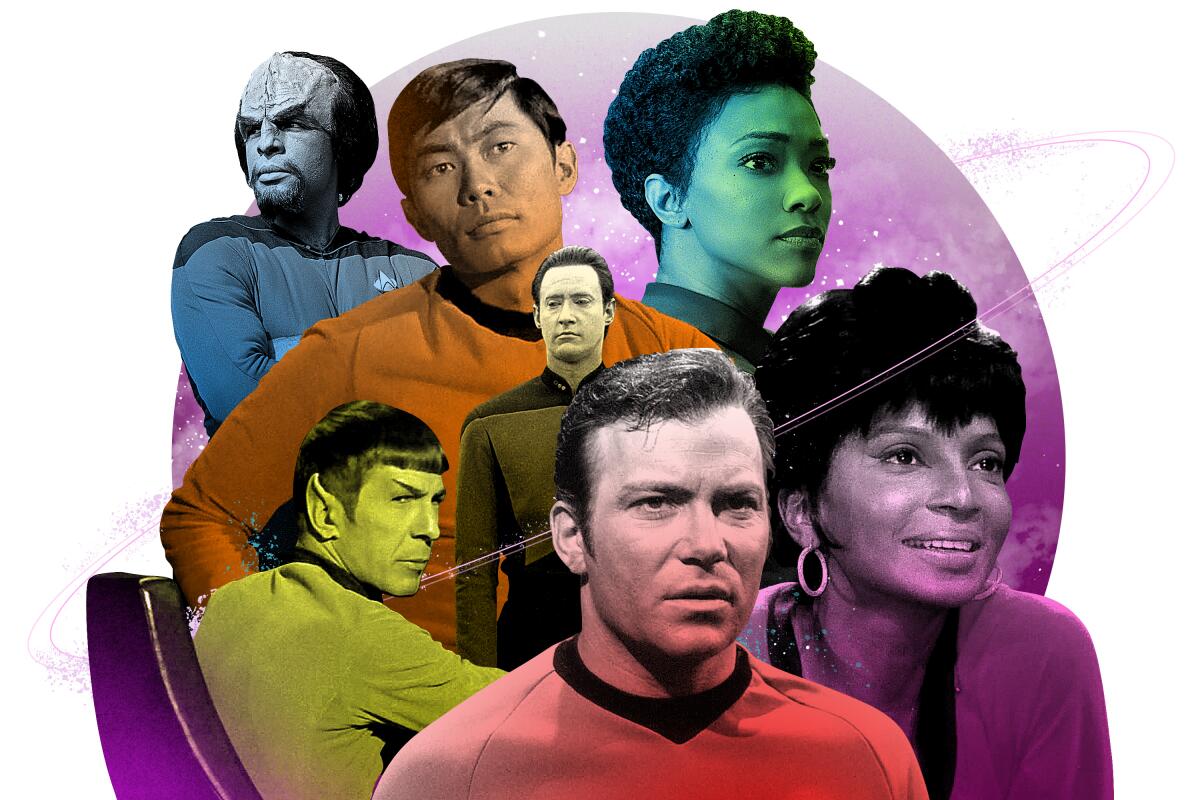
- Show more sharing options
- Copy Link URL Copied!
Of all the science fiction franchises in the known universe, the one I would take to a desert island — or planet, I guess — is “Star Trek.”
I am not a Trekkie by any means (not that there’s anything wrong with that). I have never dressed as a Vulcan. I can’t speak a word of Klingon or identify the starships by their silhouettes or tell you how many tribbles it takes to make trouble. But a lot of general knowledge has seeped into my brain over the years: “Beam me up, Scotty.” “Fascinating.” “He’s dead, Jim.” “I’m a doctor, not a [insert any other profession].” “Make it so.” “Engage.” I’m au fait with all those catchphrases. I’ve watched every series, if not in their entirety, and all of the movies . (I do not count the J.J. Abrams big screen reboots, which operate on another timeline, though I’ve seen those too.) And I have greeted each new iteration with interest and a certain “Hello, old friend, what are you up to now?” affection.
This year marks the centenary of creator Gene Roddenberry’s birth and 55 years since the premiere of what is now officially referred to as “The Original Series” or “TOS,” and there are various home video remasterings and reboxings available. Thursday sees the premiere of the excellent “Star Trek: Prodigy,” streaming on Paramount+, where the franchise is star-based. This new CGI series is about a bunch of misfit teenagers escaping a slave-labor camp in a stolen Federation starship, on the run from a very bad guy — but kind of joyriding too. (It’s being advertised as the first “Trek” series aimed at young audiences, somehow forgetting or reclassifying the early 1970s “Star Trek: The Animated Series,” which featured William Shatner, Leonard Nimoy and DeForest Kelley in their original roles as Kirk, Spock and McCoy, aired Saturday mornings, and won a Daytime Emmy as a “children’s series” in 1975.) None of the characters is human or in some cases even humanoid, apart from the hologram of Capt. Janeway (Kate Mulgrew), employed here as a kind of interactive help-bot. It is quite lively in terms of action, and funny where it’s supposed to be, but as in all “Star Trek” series and films, character is what counts most.
The complete guide to home viewing
Get Screen Gab for everything about the TV shows and streaming movies everyone’s talking about.
You may occasionally receive promotional content from the Los Angeles Times.
From the name forward, the franchise bears comparison with “Star Wars,” with its spaceships and aliens and interplanetary scope, not to mention the range of storytelling platforms — movies and TV, cartoons and comics, novels and fan fiction.
I wouldn’t deny that there’s fun to be had from George Lucas’ baby, now bouncing for Disney, but “Star Wars” is not science fiction. It’s a fantasy set in space, where wizards do magic and heroes fight with swords and prophesied chosen ones take up their lightsabers; a special effects western cum samurai film cum collection of war movies in which, a few defections notwithstanding, good fights bad until one obliterates the other; and an expensive homage to the cheap Saturday serials of the 1930s. Its one endlessly repeated theme is bad parenting — or, in the case of “The Mandalorian,” the first “Star Wars” live-action television series, good (surrogate) parenting . But “Star Wars” on the whole has no real interest in ideas, in asking “Why?” or “What if?” The droids are comic relief, and slaves. Joseph Campbell’s the Hero with a Thousand Faces has often been cited, by Lucas and others, to connect these characters to a deeper storytelling tradition; the problem with a thousand-faced hero, however, is that you have seen that shtick a thousand times.
“Star Trek” is a different animal. From the beginning it had a mission, not just to explore strange new worlds, seek out new life and new civilizations, and boldly go where no earthlings had gone before, but to model a future for its audience that was a little ahead of its time. Where “Star Wars” was slow off the mark with diversity — the only Black actor in “A New Hope,” James Earl Jones, supplied the voice of a white character, and even now has only managed one same-sex kiss between minor characters — “Star Trek” made diversity a point from the beginning, with George Takei’s Sulu and Nichelle Nichols ’ Uhura on the bridge. (Whether the 1968 kiss between Kirk and Uhura was the first interracial kiss on television is a subject of debate and semantics, but it was in any case ahead of its time.) The third series, “Star Trek: Deep Space Nine,” put a Black man (Avery Brooks’ Sisko) in charge; the next, “Star Trek: Voyager,” a woman (Mulgrew’s Janeway). Throughout the various series, and in the sci-fi tradition, contemporary earthly issues — racism, Cold War politics, environmental degradation, despotism, sexism — are seen through the lens of future, extraterrestrial exploits. The presence of aliens (also ethnically diverse), on the crew or just passing through, offered writers a chance to comment with distance on the puzzlements of human behavior.
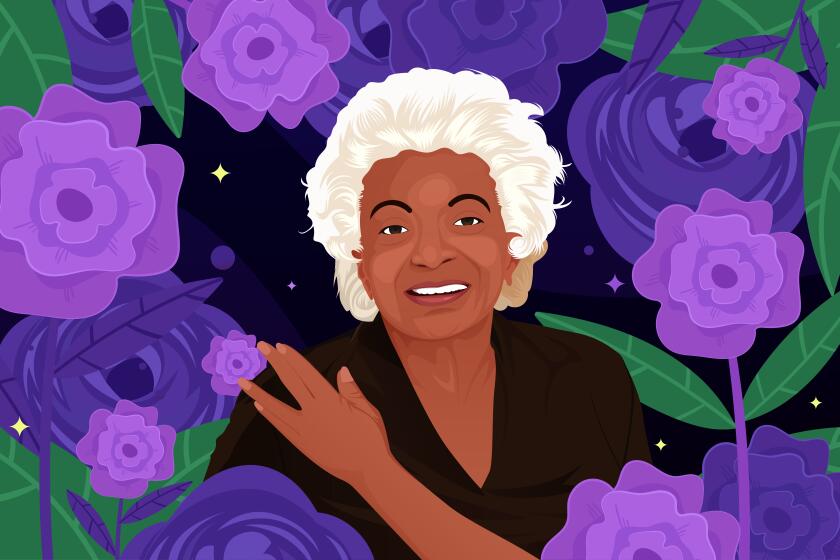
Entertainment & Arts
Inside the heartbreaking conservatorship battle of a ‘Star Trek’ legend
Nichelle Nichols, the beloved Lt. Uhura on ‘Star Trek,’ is living with dementia and struggling financially. Three parties fight to control her fate.
Aug. 15, 2021
That “Star Trek,” which originally ran from from 1966 to 1969, returned to television in the first place — there was a nearly 20-year break before “Star Trek: The Next Generation” — owes something to “Star Wars,” of course, which made space operas eminently bankable. But it had plenty of firepower of its own, charged by the the post-cancellation success of the original series, which flourished in syndication. A 1975 “Star Trek” convention in New York City, two years before “Star Wars” premiered, reportedly drew a crowd of 15,000 and turned thousands more away at the door; by 1986, the year before “The Next Generation” premiered, it was the most successful syndicated series going. A big-screen franchise, eventually numbering six films with the original crew, was up and running by 1979, followed by four “Next Generation” films — the first of which paired Shatner’s Kirk and Patrick Stewart’s Picard in a timeless corner of space.
To be sure, the revival of the brand may also be seen as a bottom-line event, designed to bring subscribers to what was then known as CBS All Access and is now called Paramount+, much as “The Mandalorian” was a boon to Disney+.
But it has produced excellent results. I’m a fan of all these shows: “Star Trek: Discovery,” especially in its adventuresome second and third seasons, with a fourth season premiering Nov. 18; the deep and thoughtful “Star Trek: Picard,” with Stewart back in the saddle (though going rogue); “Star Trek: Lower Decks,” an adult cartoon about service workers on a “second contact” vessel, that both parodies and celebrates the spirit and story conventions of the live-action shows while adding quotidian context and details. (We see how the ordinary crew lives; I can’t tell if it’s canonical, but it should be.) And there are more “Treks” arriving: the aforementioned “Prodigy”; “Star Trek: Strange New Worlds,” a spinoff at once from the second season of “Discovery” and the original “Star Trek” pilot, with Ethan Peck as a well-cast young Spock, Anson Mount as Capt. Christopher Pike and Rebecca Romijn as his Number One; and when one of the current series departs and other stars align, “Star Trek: Section 31,” another “Discovery” spinoff, with Michelle Yeoh reprising her role as Philippa Georgiou.

Because it was born and grew up on television, in an age when special effects were a luxury and not a given, the franchise has been devoted less to action than talk, and to philosophical questions — what it means to be human, or Vulcan, or Klingon, an android or noncorporeal. The fact that there are many, many, many hours of “Star Trek” content — which are, to some extent, preserved in the new series, with their intersecting plotlines — means that “Star Trek” has had the space to tell many sorts of stories: mystery stories, love stories (and impossible-love stories), funny stories, family stories, spy stories, horror stories, workplace stories. Much of the charm in the original series derives from the double act Shatner and Nimoy developed, based in a kind of affectionate mutual incompatibility, and subsequent “Treks” developed bonds between characters it is easy to invest in, and which in some cases (as with Capt. Picard and Data) became their very foundation.
It’s an emotional show, and not infrequently a show about having emotions — giving in to them, repressing them, making use of them. On the one hand you’ve got Spock, and all the Vulcans who came after, pumping for logic; on the other, there’s Data the android, a logical being who dearly wants to know what it is to be human, like his friends. It’s significant that the second series, “The Next Generation,” added a therapist to the crew — Marina Sirtis’ Deanna Troi — and eventually a bartender (Whoopi Goldberg as Guinan), which is to say, another sort of therapist.
The original series could be incredibly silly, unwittingly (and sometimes wittingly) self-parodying. The lack of money, one might say, was on the screen. One could practically smell the gray paint and plywood on the Enterprise sets. The series’ celebrated technobabble is just a kind of reformulated abracadabra; human characters get the hang of alien gear faster than you could look up how to reset your car’s clock in the owner’s manual. Everything happens in the nick of time. Kirk’s occasional romantic interludes might have seemed kind of hilarious even at the time, but certainly are risible now; and although there were strong roles written for women from the beginning, they were often stuck in some sort of minidress.
‘Star Trek’ was canceled 50 years ago. Now, the franchise is flying warp speed ahead
It was 50 years ago that “Star Trek” died.
May 9, 2019
And despite their hopeful tenor, these shows’ creation was not always peaceable. Roddenberry, whose involvement was lesser and greater over the years for reasons of health or business, could be critical of “Trek” made under others’ watch if he felt they weren’t staying true to his big themes. (Wikipedia will give you a pretty good idea of the rough roads some series and films have taken on the way to launch, and after.) But taken as a whole over time, “Star Trek” has remained remarkably true to a vision: Peace is better than war; violence is dramatically less interesting than discussion; difference is not merely respected but portrayed as a positive good.
There is the convention of the disposable crewman (“redshirts,” referring to the color of their uniform, has become a generic term for an anonymous character who dies early in a scene to indicate danger), but death even of the nameless is not usually paid back with death; revenge, while it is a motivating factor for characters in many stories, is regarded in the “Trek” universe as a dish best not served at all.
Mighty heroes mowing down hordes of literally faceless enemies, crowds cheering military victories — that is not the “Star Trek” style. There is relief when a foe is sent packing, but rarely glee. Phasers are usually set to stun. Spock’s Vulcan nerve pinch can send an opponent to the floor, but the Vulcan death grip (“The Enterprise Incident,” Season 3) is a fiction, a subterfuge. Current custom and affordable, high-quality modern SFX technology does mean that there is more space battling in the new “Treks” and more martial arts-style fighting (you are not going to leave Yeoh sitting in a chair, after all), but diplomacy remains the goal, and it is only when that fails that big things are blown up. “Get us out of here” is a thing Capt. Kirk would regularly say.

“Star Trek” envisions an Earth in which, as in John Lennon’s “Imagine,” the old dividing lines — ethnic, political, religious — have all disappeared; there is no war, no poverty, no pollution, and technology finally works for us rather than against us. Though these things seemed possible in the progressive era when “Star Trek” was born, I’ve grown increasingly doubtful about humanity’s ability to intelligently regulate its most local affairs, let alone join with alien species in a project of interplanetary goodwill.
Which may be why I love the “Star Trek” universe, and why I melt when, at the end of the third season of “Discovery” — a season very much about coming to terms with one’s nature and needs, limits and abilities — Sonequa Martin-Green’s (newly promoted) Capt. Burnham says, “The need to connect is at our core as sentient beings. It takes time effort and understanding … but if we work at it a miracle can happen.”
And who knows? The future is a long road.
More to Read

CNN Originals looks for a comeback after cuts with space shuttle Columbia series
April 6, 2024
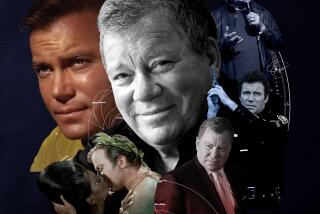
William Shatner has performed for decades, but he also loves horses and is designing a watch
March 12, 2024
‘Percy Jackson,’ ‘Avatar’ and epic coming-of-age tales are getting their live-action TV moment
Feb. 28, 2024

Robert Lloyd has been a Los Angeles Times television critic since 2003.
More From the Los Angeles Times

The honeymoon is over: ‘The Golden Bachelor’ and his bride call it quits after 3 months
April 12, 2024

Gen Z is watching ‘Sex and the City’ for the first time. Our discovery? Carrie is a terrible friend

Death of ‘1923’ actor Cole Brings Plenty shows ‘no indication of foul play,’ sheriff says
April 11, 2024
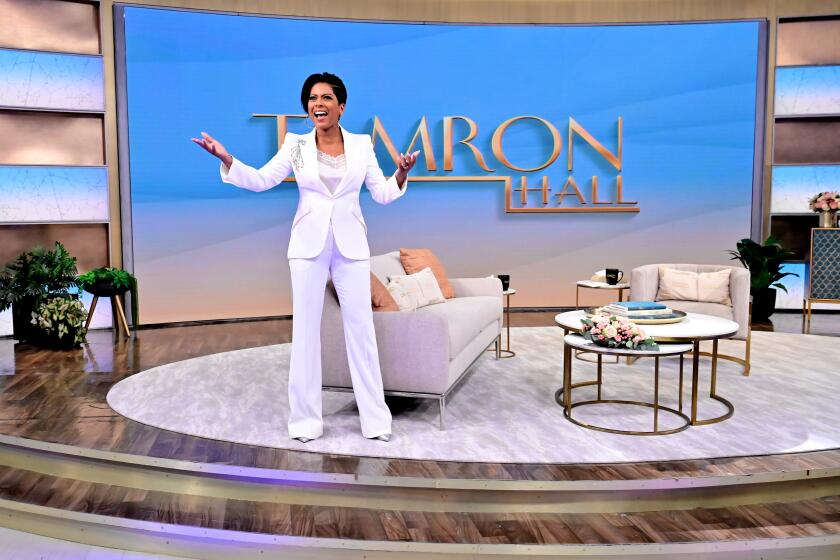
‘Tamron Hall’ set evacuated, show scrapped after grease fire at ABC Studios
20 Enterprising Facts About Star Trek
By bryan reesman | sep 8, 2021, 4:00 pm edt.

NBC Television, Public Domain, Wikimedia Commons
On September 8, 1966, Gene Roddenberry's galaxy spanning Star Trek saga debuted on NBC and helped transform sci-fi television from tired stereotypes into a genre rich with multi-layered drama, ethnically diverse characters, and real world issues. While it wasn't a big hit at the time, Star Trek eventually developed a loyal following that continued through an animated series, the long-running film franchise, and other live-action television series from the late 1980s onward. The show sometimes hired iconic sci-fi writers including Richard Matheson, Robert Bloch, Theodore Sturgeon, and Harlan Ellison (who won a Hugo Award for his episode, " City On The Edge Of Forever "), while Isaac Asimov developed a friendship with Roddenberry.
To commemorate this momentous occasion, let's look back at the groundbreaking series, during which the crew of the Enterprise journeyed on far-flung peacekeeping and rescue missions, answered distress calls on distant planets, and faced confrontations with warmongering aliens. There has been plenty written about this iconic show, but there always seems to be something new to learn.
1. Captain Pike preceded Captain Kirk.
The unaired pilot “The Cage” (which finally debuted on home video in 1986) featured an almost entirely different cast and crew, with Mr. Spock being the lone holdover on the bridge when the classic team appeared in the first official episode. Jeffrey Hunter ( The Searchers ) starred as Captain Christopher Pike, who gets abducted by telepathic aliens for psychological experiments involving a human woman. The original pilot was actually pretty good, but the cast lacked the same warmth and diversity that would ultimately emerge. When the studio rejected the original pilot—allegedly for being too cerebral and lacking in action—creator Gene Roddenberry sought to make another, but Hunter chose to move on to other projects. In the end, it was good that NBC rejected the original pilot, because the show was revamped into something much stronger.
2. Captain Pike returned for two episodes and the Star Trek movie reboot.
Several episodes in, the producers of Star Trek created a two-part episode called “The Menagerie” that utilized much of the original pilot. Mr. Spock was taking a now battle-scarred and disfigured Captain Pike back to the planet Talos IV (which was off limits to Federation vessels) for unknown reasons, and he would not reveal why until he seized control of the Enterprise and faced a court-martial. It was a clever and cost-effective way to reuse the unaired material and craft a new storyline. In J.J. Abrams' 2009 movie reboot, writers Roberto Orci and Alex Kurtzman brought back Pike (played by Bruce Greenwood) as Kirk’s superior officer and mentor on his first mission in space. It was a nice nod to the original series.
3. Star Trek ’s original number one was a woman.
In the original pilot, Gene Roddenberry’s girlfriend and future wife, Majel Barrett, was Kirk’s first officer (who still had to deal with the Captain’s presumptions about women on the bridge). Test audiences allegedly did not like her character because they thought she was too pushy and tried to be like the men, but modern audiences would not think of any of those things. When Pike was kidnapped, she led a mission to the planet to rescue him and proved herself to be a capable leader, but this was about a year before the women's liberation movement began gestating in America. The Star Trek universe finally got its first female captain with Captain Kathryn Janeway in Star Trek: Voyager , which aired between 1995 and 2001.
4. Majel Barrett Roddenberry worked on every Star Trek series.
Majel Barrett Roddenberry returned in many episodes of the original series to play Nurse Christine Chapel, who had unrequited romantic feelings toward Mr. Spock. She played a more nurturing character, but did not have the command duties of her original role. Following that, Barrett Roddenberry—who has been called “The First Lady Of Star Trek ”—had roles in every Star Trek series, playing Nurse Chapel, Lt. M'Ress, and other characters on Star Trek: The Animated Series ; Lwaxana Troi and the voice of the Enterprise Computer on Star Trek: The Next Generation ; and the computer voices on Deep Space Nine , Voyager , and Enterprise . She also appeared as Dr. Chapel in Star Trek: The Motion Picture and as Commander Chapel in Star Trek IV: The Voyage Home , and she provided voice work to other films (including the 2009 reboot) and various video games. After her husband died in 1991, Barrett Roddenberry served as executive producer on two series he had created: Earth: Final Conflict (1997-1999) and Andromeda (2000-2005). She passed away in 2008, but not before recording—you guessed it—the Starfleet Computer voice for J.J. Abrams's 2009 movie reboot.
5. Kirk had a dark past before Star Trek.
Prior to venturing into space and encountering all sorts of intergalactic nemeses like the Romulans, Klingons, and the superhuman Khan, William Shatner appeared in a variety of dark film and television projects. In Roger Corman’s underrated film The Intruder , he played a racist agitator in a Southern town who pushes things too far. In Incubus , a film shot entirely in the Esperanto language , he played a good-hearted man with whom a succubus falls in love, angering her sister and setting about retribution. His appearance as a man terrified of a gremlin on the wing of a plane in an episode of The Twilight Zone is famous, but he also made a turn in possibly the best horror TV episode ever, “The Grim Reaper” on Thriller , as a man who warns his aunt that the previous owners of the portrait of the titular character, which she now owns, have died violently.
6. Star Trek ’s Spock has greenish skin, but it was originally meant to be red.
While Spock’s skin has a slight green tint to it, the original plan was to give him red skin. But back in the mid- to late 1960s, a majority of households still had black and white televisions, so his skin would appear very dark when viewed on their sets. In one early episode, however, Spock looked really green. Someone messed up the color palette that day. One wonders if the chance to see the shows in color during their subsequent syndicated runs helped lure new viewers and give excited longtime fans the chance to re-watch the episodes in a way they had never seen them before.
7. William Shatner and Leonard Nimoy both got tinnitus on the set of Star Trek .
After an explosion on the set of one of the Star Trek films, both stars developed tinnitus, a ringing or buzzing in the ears than is often permanent and can be debilitating for some sufferers. After seeking help all across the country, Shatner learned to deal with it through habituation by wearing a hearing device for a time that produced white noise to help him cope. He has helped others as well. "I’ve talked people down from suicide," Shatner told me in an interview for The Aquarian . "A famous musician got a hold of me cold. I didn’t know him. He knew I got it because I was the official spokesman for tinnitus at one period, and I talked him down and encouraged him to do habituation, you know, the white sound, because when I was asked when I first got it how it affected my life from 1 to 10, it was 9 1/2. Now I don’t hear it except when you and I are talking about it."
8. A lot of Star Trek technology became reality.
If one looks at the original series, much of the technology being used ultimately became real. The communicators are like modern cell phones, the earpieces worn by Uhura and Spock are basically Bluetooth devices, the Universal Translators are echoed by the use of modern voice recognition software, tricorders have become the LOCAD-PTS , a portable biological lab used by NASA, and the use of interactive video screens (telepresence) is akin to current video conferencing. While Enterprise crew members recorded audio on hard-cased cassette tapes, they looked like soon-to-be modern floppy discs, which are now outdated in our digital era.
9. There have been more than 125 Star Trek -related video games.
Since 1971, more than 125 video games based on or inspired by the Star Trek series have been created, beginning with a text game written in BASIC in 1971, a standup arcade game in 1972, and later early computer and gaming systems like the Commodore 64 and Atari 5200 through to modern PS3 and Xbox 360 consoles. Many of the titles are quite colorful, like The Kobayashi Alternative , Klingon Honor Guard , and Delta Vega: Meltdown on the Ice Planet . It would probably be hard to collect them all at this point—or to be able to play them, unless one owns all the various video game platforms required—but perhaps someone has.
10. Star Trek ’s Vulcan salute is actually a Hebrew blessing.
Leonard Nimoy did not create the Vulcan salute that means "Live Long and Prosper" out of thin air for the season two opener "Amok Time," which was the first time we got to see Spock among his people on Vulcan. It was actually borrowed from something he had witnessed as a child when he was attending a service at an Orthodox Jewish synagogue with his family.
"Five or six guys get up on the bimah, the stage, facing the congregation," Nimoy told the Yiddish Book Center in 2014. "They get their tallits over their heads, and they start this chanting—I think it's called duchening —and my father said to me, 'Don’t look.' So everyone’s got their eyes covered with their hands or they've got their tallit down over their faces ... And I hear this strange sound coming from them. They’re not singers, they were shouters. And dissonant. It was all discordant … it was chilling. I thought, 'Whoa, something major is happening here.' So I peeked. And I saw them with their hands stuck out from beneath the tallit like this [ does salute with both hands ] towards the congregation. Wow. Something really got hold of me. I had no idea what was going on, but the sound of it and the look of it was magical.”
The hand gesture represents the Hebrew letter Shin, which represents the word Shaddai , a name for God. It looks like a lot of people have been blessing each other without knowing it.
11. Star Trek ’s Kirk/Spock connection continued in real life.
The bond that Captain Kirk and Mr. Spock enjoyed throughout their long onscreen association was also echoed by William Shatner and Leonard Nimoy's off-camera relationship. It's interesting to note that while Spock seemed like the more isolated member of the crew who needed that human connection with Kirk, in real life Nimoy was an important person for his co-star. In a 2016 interview with The Aquarian , Shatner admitted that he never had had a close, intimate friendship with anyone before then. "I had that with Leonard, and that was the only time I had it," he confessed. "I envied it for the longest time, achieved it, then the book [ Leonard: My Fifty-Year Friendship with a Remarkable Man ] continues on. It’s a very interesting aspect of life, developing a friendship. Not the 'Let’s go get a beer' friendship, but deep, deep down, 'Here’s my problem, I need your help.'"
12. In a way, Star Trek was the original Buffy The Vampire Slayer .
Despite not really having many ass-kicking women on the original show, Star Trek was the predecessor to Buffy the Vampire Slayer , Angel , and like-minded shows that were not ratings toppers, but which hit a key demographic effectively every week. When Roddenberry's show was canceled after just three seasons, the advertising people at NBC allegedly complained to programming executives because, while the show was not highly rated, they were reaching the target audience they wanted. That statement is supported by the success that the series experienced in off-network syndication, especially since the show's three seasons (1966-1969) were one shy of what was generally required for daily syndication, and the emergence of the first Star Trek convention in January 1972. Today, a show like Star Trek would have likely lasted at least twice as long.
13. One of Bones's signature Star Trek lines was taken from a 1933 movie.
"I'm a doctor, not a bricklayer!" Bones was always making a variation on that gripe when asked to ascertain or do something outside of his medical expertise, and it is one of many Star Trek lines that has become a permanent part of pop culture lexicon. However, the idea originated with a 1933 film called The Kennel Murder Case , which starred William Powell and Mary Astor. In the film, the character of Dr. Doremus utters these quips: "I'm a doctor, not a magician." "I'm a doctor, not a detective." "I'm the city butcher, not a detective." Bones McCoy had many variations to offer throughout the Star Trek TV and film series, and he certainly made the gag his own.
14. Star Trek has a connection to Stanley Kubrick.
Before he appeared as an astronaut on the Jupiter mission sequence of Stanley Kubrick’s classic sci-fi film 2001: A Space Odyssey , Gary Lockwood appeared in the episode " Where No Man Has Gone Before ," which was the third episode of season one. His character attained godlike powers that made him drunk with power and posed a grave threat not just to the Enterprise , but to the galaxy itself.
15. Star Trek strived for ethnic and gender diversity, but the women still had to look sexy.

While Gene Roddenberry strived to push boundaries as much as he could, women were still sexed up for the show. Consider that Lieutenant Uhura, Yeoman Rand, Nurse Chapel, Dr. Helen Noel, and other female members of the Enterprise crew all wore mini-dresses. Further, close-ups of the female crewmembers were given a slightly softer focus to make them look dreamier, which was a common Hollywood trick at that time. While some of the female characters were strong, others—like Lt. Marla McGivers in the "Space Seed" episode—were rather frail when it came to men. Things got better for women in later Star Trek series, but then they came about in more enlightened times.
16. Many of the effects in the original Star Trek series were upgraded for HD broadcast and release in 2006.
When Star Trek: The Original Series was being prepared for its initial HD broadcast (and subsequent HD-DVD release) for the fall of 2006, Paramount decided to take a chance and upgrade all of the sequences involving the Enterprise flying and any background shots of space or environmental matte paintings. While some fans (and Leonard Nimoy , at least at first) thought this was heresy, visual effects producer Michael Okuda—who had been involved with the franchise since Star Trek V: The Final Frontier —made sure that the new CGI sequences and backgrounds were integrated smoothly with the old footage.

17. Mark Lenard was a Romulan, a Klingon, and a Vulcan on Star Trek .
Actor Mark Lenard had a dramatic visage that lent itself well to space opera, and he was the first actor in the franchise’s history to have played members of three different alien races. In the season one episode "Balance Of Terror," he played the Captain of an ultimately doomed Romulan vessel that has invaded Federation territory. In the opening to Star Trek: The Motion Picture , he plays a Klingon commander on a doomed ship caught in the path of the mysterious cloud that is wiping out anything in its path. But his biggest role in the franchise was portraying Spock’s father, Sarek, in the second season episode "Journey To Babel," the Animated Series episode "Yesteryear," and in the third, fourth, and sixth Star Trek films.
18. Malcolm McDowell received death threats after killing Captain Kirk onscreen.
McDowell played the charmingly misanthropic droog Alex DeLarge in Stanley Kubrick’s A Clockwork Orange , but he was on the receiving end of Star Trek fans’ wrath when his character, Dr. Tolian Soran, killed Captain Kirk in Star Trek: Generations— the first film born from the Star Trek: The Next Generation series that bridged the two series onscreen. In 2010, McDowell admitted that he was shocked at the vitriol of devout Trekkies—and that he actually received death threats.
"I didn’t take it seriously," McDowell told me . "The studio took it seriously. I suppose they had to because they didn’t want a lawsuit. They assigned two detectives to come with me to New York to do the press. It was a complete waste of time and quite funny. I kept telling the guys to go home, and they were going to stay outside my room the whole night at the Carlyle Hotel. I went for a walk, and they came with me. I literally came out of the Carlyle at 10 o’clock at night. I looked this way and that way, and there wasn’t one person on the street. Not one. I went, 'Wow, this is some death threat.' I said, 'I feel embarrassed that nobody’s tried to kill me, for Christ’s sake! I feel like I’m letting the detectives down.'"
19. Star Trek ’s episodes are not in chronological order.
If one lists the stardates for each episode, it is soon apparent that the series is not told in order—not that it was intended that way, since the episodes of the original series were not always broadcast in production order, leaving some fans to scratch their heads. Roddenberry improvised an explanation that worked at the time. "I came up with the statement that 'this time system adjusts for shifts in relative time which occur due to the vessel's speed and space warp capability. It has little relationship to Earth's time as we know it. One hour aboard the U.S.S. Enterprise at different times may equal as little as three Earth hours. The star dates specified in the log entry must be computed against the speed of the vessel, the space warp, and its position within our galaxy, in order to give a meaningful reading,'" he told The Making Of Star Trek author Stephen E. Whitfield. "Therefore stardate would be one thing at one point in the galaxy and something else again at another point in the galaxy. I'm not quite sure what I meant by that explanation, but a lot of people have indicated it makes sense. If so, I've been lucky again, and I'd just as soon forget the whole thing before I'm asked any further questions about it."
20. William Shatner pissed off Star Trek fans when he hosted Saturday Night Live .
While the thespian with the famously quirky cadence has embraced his Star Trek legacy, he has not let it define his life since he has become known for other roles in other shows as well, most notably T.J. Hooker and Boston Legal . But back in the 1980s, when the movie franchise was a hit and conventions kept growing, the befuddled star decided to make a statement about the ardent fandom that he had not yet understood by doing a skit when he hosted Saturday Night Live on December 20, 1986.
In the sketch (which you can watch above), Shatner played himself attending a convention of newly renamed "Trekkers" and, once he started getting ultra nerdy questions, he literally told the crowd to get a life. "You're turned an enjoyable little job that I did as a lark for a few years into a colossal waste of time," he griped. "I mean, how old are you people? What have you done with yourselves?" Some fans did not appreciate the joke. In 1999, Shatner penned a book called Get A Life! , which examined the cult of Star Trek fandom, and was turned into a documentary in 2011. It seems like Kirk decided to appreciate his followers after all.
A version of this story ran in 2018; it has been updated for 2021.
'ZDNET Recommends': What exactly does it mean?
ZDNET's recommendations are based on many hours of testing, research, and comparison shopping. We gather data from the best available sources, including vendor and retailer listings as well as other relevant and independent reviews sites. And we pore over customer reviews to find out what matters to real people who already own and use the products and services we’re assessing.
When you click through from our site to a retailer and buy a product or service, we may earn affiliate commissions. This helps support our work, but does not affect what we cover or how, and it does not affect the price you pay. Neither ZDNET nor the author are compensated for these independent reviews. Indeed, we follow strict guidelines that ensure our editorial content is never influenced by advertisers.
ZDNET's editorial team writes on behalf of you, our reader. Our goal is to deliver the most accurate information and the most knowledgeable advice possible in order to help you make smarter buying decisions on tech gear and a wide array of products and services. Our editors thoroughly review and fact-check every article to ensure that our content meets the highest standards. If we have made an error or published misleading information, we will correct or clarify the article. If you see inaccuracies in our content, please report the mistake via this form .
The beginner's guide to Star Trek: What to watch first

The Star Trek television world consists of eleven full and distinct television series released across the decades, going all the way back to the mid-1960s. While some of the older sets and effects are certainly dated, some of the issues the shows grappled with back in the day are as relevant now as they were almost 60 years ago.
When Star Trek debuted on September 6, 1966, it was a relatively low-budget TV series with only lukewarm network support. It took two pilot episodes before the series was picked up by NBC, only to be unceremoniously cancelled three years later. Nobody back then knew that Star Trek would create cultural touchstones and iconic characters, or that it would go on to spawn ten more TV series (so far) and thirteen movies (also, so far).
Today, Star Trek is deeply entrenched in modern mythology, with characters like James T. Kirk and Jean-Luc Picard as familiar to us as Clark Kent, Bruce Wayne, Tony Stark, Luke Skywalker, and Han Solo.
But not everyone is fully up to speed on all things Trek . Perhaps you're seeing promotions for the new shows coming out this year and wonder what all the fuss is about. Perhaps you want to introduce Star Trek to a younger generation or catch up after a long hiatus.
No matter what, we're here to help. In this guide, I'm going to take you through the TV series and help you understand what each is about, give you some hints about watching order, and share with you my subjective perspective on the shows.
Also: 14 unofficial Star Trek series and films
Star Trek has inspired a tremendous amount of media. Beyond the TV shows, there are movies, video games, books, comics, fan fiction and productions, collectables, and more. Because the commercial world of Star Trek fandom is so huge, I'm going to limit our discussion to just the TV shows -- although there will be a few mentions of one or two movies that are requisite viewing for later series' continuity.
How to get started
There are four Star Trek series currently in production right now. More are rumored to be on the way. And there's even a Seth McFarland-helmed homage to Star Trek called The Orville that carries on the Trek spirit (new episodes will be broadcast on Hulu in June).
So, you could get started watching a current show, especially since the visuals and production quality are top-notch. If you feel strongly about starting with new material, I'd recommend kicking off your watching with Star Trek: Strange New Worlds on the Paramount+ streaming service. I'll talk more about SNW (most Trek series get abbreviations) in a bit. Another choice would be the gorgeous animated series Star Trek: Prodigy . It's intended to bring kids into the Star Trek universe, but it fires on all cylinders for adults just as well.
But I recommend you start where it all started: Star Trek , the original series ( TOS ) produced in the 1960s. It's here you'll meet Captain Kirk, Mr. Spock, Dr. McCoy, and Scotty the engineer. This is where it all began, and everything builds upon this fundamental mythology.
And with that, let's get started!
1. Star Trek: The Original Series (TOS)
The series that began it all.
- Production Years: 1966-1969
- Trek Timeline Years: 2266-2269
- Seasons: 3
- Episodes: 79
- Stream on: Paramount+
- Buy: Amazon
This is it. The series that began it all. I recently rewatched the entire run of TOS after not having seen it in years, and the thing that made the biggest impression on me was how much they got right in those early years. Roddenberry was building a mythos out of thin air, and yet many of the foundational elements that Star Trek folks know and love today were written into those early shows.
Of course, Roddenberry didn't get it perfect right out of the gate. He did two pilots which introduced Captain Christopher Pike instead of Captain Kirk and a female "Number One" as second in command. This pilot, called " The Cage " never made it on the air but was repurposed into a two-parter late in the first season. You'll want to remember Pike and Number One because they're prominent in the new modern-day Trek series currently being released.
Some episodes of this very early series age well, while others are deeply cringeworthy. Because it's 1960s entertainment (and relatively low-budget entertainment at that), it can be a bit tedious at times. And yet, it touched on some really important themes. Martin Luther King Jr. actually reached out to Nichelle Nichols , who played Lt. Uhura , when she was considering leaving the show. He urged her to stay on because he saw her role as a very important inspiration.
If you want to understand all the Trek lore that comes after, this is the place to start.
Must watch episodes: The City on the Edge of Forever, Space Seed, The Trouble with Tribbles
Movies: There were six movies made with the TOS cast. Of them, the best two are The Wrath of Khan (which sets up a lot of subsequent mythos) and The Voyage Home , which is probably the most fun of them all.
2. Star Trek: The Next Generation (TNG)
The story forward 100 years.
- Production Years: 1987-1994
- Trek Timeline Years: 2364-2370
- Seasons: 7
- Episodes: 178
Star Trek's continuing popularity during the eighteen years after NBC cancelled the original series was unexpected. Star Trek , that weird space show with the pointy-eared alien, turned out to have legs. It took ten years of fan pressure and conventions, but in 1979 Star Trek: The Motion Picture was released. It was... not so good. But three more movies came out over the next eight years, and they were great. So the momentum was in place for a Star Trek reboot.
Rather than recasting the original characters, Roddenberry decided to move the story forward almost 100 years, create a version of the Enterprise starship whose interior decor most resembled a Marriott hotel in outer space, and give it warp nacelles and photon torpedos. This was The Next Generation , with Captain Picard, first officer William Riker, the android Data, the boy wonder Wesley Crusher, his mom, the Klingon Worf, and unlucky-in-love engineer Geordi La Forge. Roddenberry even created the role of a mental health counsellor (Deanna Troy) as a key member of its bridge crew.
While Patrick Stewart's Picard was much more Captain Stubing than Shatner's Captain Kirk, there's no doubting this Shakespearean actor's talents. Brent Spiner, as the android-who-wants-to-be-human, was another standout performer. The first two seasons were a little rocky. Remember: back then, nobody knew whether this show would last, and the actors and showrunners were still trying to come to terms with how to move beyond TOS . But subsequent years are among the best science (and societal) fiction you'll ever see on TV.
Must watch episodes: The Measure of a Man, Yesterday's Enterprise, The Best Of Both Worlds I and II
Movies: There were four movies made with the TNG cast. The first one, Generations , also included key members of the TOS cast. I recommend you watch First Contact because it's a really good movie. And you might want to watch Nemesis because it sets up some details you'll need in later series (but it's definitely not the best movie made).
Also: Best video streaming service
To boldly go...
Once you've watched TOS and TNG , you're pretty much ready to travel wherever you want throughout the Star Trek franchise. You'll have a good foundational understanding of the Federation, the various alien species, the rules and regulations of Starfleet, and most of the iconic characters.
My recommendation is to wrap up the early Trek productions by taking in the two seasons of the first animated series. Then, move on to the middle period of Star Trek production, with Voyager, Deep Space 9 , and Enterprise , and then jump forward to the current productions. That's how I'm going to present the remaining series to you, but you can pretty much choose any order you want once you've made it this far.
3. Star Trek: The Animated Series (TAS)
Worthwhile animation with tos voices.
- Production Years: 1973-1975
- Trek Timeline Years: 2269-2270
- Seasons: 2
- Episodes: 22
- Buy: Amazon
A few years after NBC canceled TOS , Roddenberry managed to convince studio heads to let him produce an animated version of the show. While it was considerably less expensive to produce than the live-action Star Trek , the animated series was the most expensive animated show airing at the time, but that was mostly because nearly all the original series actors (Walter Koenig as Chekov was missing) lent their voices to the show.
While the series was intended as a kid's show, it hews pretty closely to classic Star Trek themes and can be considered a proper sequel to TOS . Watching it in 2022 is a bit weird because cartoons from the 1970s definitely seem a bit weird to our 2022 mindset, but TAS is a worthwhile romp, especially since it features the voice work from the core actors who first made Star Trek .
Must watch episodes: Yesteryear, The Slaver Weapon, More Tribbles, More Troubles (because...Tribbles)
4. Star Trek: Deep Space 9 (DS9)
Thought-provoking, must-watch tv.
- Production Years: 1993-1999
- Trek Timeline Years: 2369-2275
- Seasons: 7
- Episodes: 176
- Stream on: Paramount+ , Netflix
- Buy: Amazon
By many measures, Star Trek: Deep Space 9 is as good as Star Trek (or science fiction overall, for that matter) gets. Rather than exploring strange new worlds and seeking out new life and new civilizations, Deep Space 9 takes place mostly on the eponymous space station, Deep Space 9.
The station sits at the junction of a wormhole to the Gamma Quadrant (a far off part of space) and the planet Bajor, a planet previously occupied by Cardassians' warlike race (not to be confused with the Kardashians). DS9's leader is played by actor Avery Brooks, who starts off with the Starfleet rank of Commander and later gets promoted to Captain. DS9 starts off slow but ends with a massive war and some of the best space battles ever put on film.
While there are a few silly episodes, most plotlines are tight, deep, and thought-provoking. Characters develop complex and compelling personalities. And the show takes some powerful swings at issues of the day, with Far Beyond the Stars an absolute standout showing issues of racism in 1950s America and yet fitting totally in with the rest of DS9 . If anything can be considered must-watch TV, chock full of religious and political intrigue, it's Star Trek: Deep Space 9 .
Must watch episodes: Far Beyond the Stars, The Visitor, Trials And Tribble-Ations (because...Tribbles)
5. Star Trek: Voyager (VOY)
A female badass captain who guides her crew on the uss voyager.
- Production Years: 1995-2001
- Trek Timeline Years: 2371-2378
- Episodes: 172
The series starts with the crew of the Voyager chasing after a Maquis raider ship in a rough part of space. Suddenly, both ships get pulled into a spatial distortion, only to wind up far, far away from home. A super-powerful being called the Caretaker brought both ships to the Delta quadrant as part of its quest to help a species it cared for.
The plot of the pilot is a bit convoluted, but the Captain Kathryn Janeway makes a decision that strands Voyager and the crew of the Maquis ship in the Delta quadrant. The voyage home will take 75 years. Kate Mulgrew was not the franchise's first choice for a Janeway captain. Instead, Geneviève Bujold was originally cast in the role, but she apparently crashed and burned in a day and a half . That's fortunate because Mulgrew absolutely owns the part, turning the Janeway character into a tough, sensitive, compassionate, and absolutely kick-ass leader.
The Voyager crew becomes a blended crew with both Starfleet and Maquis. Early episodes playoff that dynamic, but the early crew conflicts tend to slip away as the series progresses and the crew coalesces. Throughout it all, the series is about how this crew survives all on its own, trying to find a way home and the adventures along the way.
Must watch episodes: Tinker, Tailor, Doctor, Spy, Year of Hell (two-parter), Timeless Worst episode in any science fiction, ever: Threshold
6. Star Trek: Enterprise (ENT)
The start of the prime universe.
- Production Years: 2001-2005
- Trek Timeline Years: 2151-2161
- Seasons: 4
- Episodes: 98
- Stream on: Paramount+
With Enterprise (the series debuted without the " Star Trek: " prefix), we're starting to move around the "Prime Universe" timeline. So, okay, some definitions are in order. In 2009, J. J. Abrams did a reboot of the original Star Trek crew in a three-movie set. That reboot changed some of the Star Trek canon (its established mythology) and became known as the "Kelvin Universe". All the Star Trek that exists in the unaltered (or mostly unaltered) mythology is called the "Prime Universe." All of the TV shows so far (but not all the movies) are considered Prime Universe.
In the Prime Universe, series timelines span centuries . The majority of established canon takes place in the TNG era, which is 2364-2379. TOS , Discovery , and Strange New Worlds take place 100 or so years earlier than TNG , while Discovery eventually jumps to about a thousand years later. But Enterprise is a prequel to all of that, showcasing a ship just beginning to travel between the stars. It takes place starting in 2151, a century before the days of Kirk and Spock.
There are some nods to the idea that technology wasn't as advanced in 2151 as it was in later centuries, but since Enterprise itself was made 35 years after TOS , the production value and effects made it seem somewhat more advanced. That will prove to be an ongoing problem with Trek prequels: what do you do when the real tech to produce the prequel is half a century more advanced? What do you do when the actual tech we have in our pockets seems far more advanced than the "future" tech shown in the early shows? Artistic license is used.
The NX-01 Enterprise is led by Captain Jonathan Archer (played by Quantum Leap's Scott Bakula) and his Number One is a Vulcan named T'Pol (played by Jolene Blalock). In Enterprise's time frame, trust between Earth and the Vulcans is tenuous, and that tension plays out over the series. Unfortunately, Enterprise only lasted four seasons. It, like most other Trek , was a bit rocky in the first seasons, but by Season 4, it was producing excellent television.
My biggest question about Enterprise is about Porthos, Archer's adorable beagle. Porthos spent most of his time in Archer's cabin, but I've always been curious about how Porthos took care of business. Did they just walk him around the decks and some crewmember cleaned it up? Was there a spot of grass somewhere in an unused cabin? It keeps me up at night.
In any case, I consider Enterprise criminally underrated. It was a great show.
Must watch episodes: In a Mirror, Darkly (two-parter), Carbon Creek, Similitude, Twilight, The Breach (because...Tribbles)
7. Star Trek: Discovery (DIS)
Discover the fun in star trek.
- Production Years: 2017-current
- Trek Timeline Years: 2255-2259, 3188-3190 (so far)
- Seasons: 4 (so far)
- Episodes: 55 (so far)
Star Trek production effectively went into shutdown for about a decade after Enterprise . After the success of the reboot movies in the late 2000s, Star Trek TV experienced a resurgence in Discovery . Discovery is a hard beast to pin down, and this had the effect of turning off some of the entrenched Star Trek fanbase. That said, it's still great TV. Discovery was the first of the modern-day Star Trek series to be available solely on streaming, via what was then CBS All Access and is now Paramount+.
Somehow (spoiler alert), Micheal Burham goes from the Federation's first mutineer with a life sentence to a beloved starship captain. Burnham is Spock's human sister (yeah, that was a surprise to everyone). Played by Sonequa Martin-Green, the standout feature of Discovery is some of its great performances and characterizations.
My favorites are the gangly alien Saru (played with absolute perfection by Doug Jones), the mirror universe emperor Georgiou (played with scenery-eating intensity by Michelle Yeoh), cranky under-utilized engineer Jett Reno (played by the wonderful-in-anything Tigg Notaro), and Captain Christopher Pike, reimagined from the pilot for TOS (who was played to such perfection by Anson Mount that the minute he hit the screen, everyone knew a series had to be made around him -- which became Strange New Worlds ).
The first season takes place ten years before the original series. Klingons don't really look like Klingons, Burnham starts a war, Discovery travels to the mirror universe where everything is Bizarro World , and chaos ensues. The second season is back in the home universe where the crew tries to stop an AI bent on destroying all life in the universe. To avoid that fate, the crew travels 930 years into the future and...okay, let's take a breather for a second.
Do. Not. Try. To. Make. Sense. Of. All. This. Discovery is weird enough to be pretty much the Twin Peaks of Star Trek . Just enjoy the fact that the visuals are impressive, the characters (at least most of them) are great, and the stories hold together long enough to make it through each episode as long as you don't think about it too much. Discovery can be annoying and sappy, to be sure. But it's also a heck of a lot of fun.
Must watch episodes (so far): An Obol for Charon, The Sound of Thunder, Short Trek: The Trouble with Edward (because...Tribbles)
8. Star Trek: Lower Decks (LD)
Focus on life onboard for low-ranking members of starfleet.
- Production Years: 2020-current
- Trek Timeline Years: 2380- (so far)
- Seasons: 2 (so far)
- Episodes: 20 (so far)
Back in 1994, there was an episode of TNG called Lower Decks . It focused on lower-ranking crew members and looked at what life onboard a starship was like for the non-hero characters of Starfleet. In 2020, Mike McMahan, previously known for his work on the animated comedy Rick and Morty , took the lower decks concept into an entire animated Star Trek series.
And it works. McMahan also addressed a lot of fan complaints about Discovery by including an almost overwhelming array of Star Trek Easter eggs as fan service in the series. If you've ever wondered about Cetacean Ops , for example, McMahan has an entire episode devoted to Starfleet's underwater crew.
Overall, Lower Decks delivers fully Star Trek plots, along with a lot of genuinely funny moments. But it doesn't sacrifice good storytelling either for laughs or nostalgia.
Must watch episodes (so far): No Small Parts, First First Contact, An Embarrassment of Dooplers
9. Star Trek: Prodigy (PRO)
Animated and visually stunning.
- Production Years: 2021-current
- Trek Timeline Years: 2383- (so far)
- Seasons: 1 (so far)
- Episodes: 9 (so far)
Prodigy is the second animated series currently in production. It has a completely different theme and art style from Lower Decks and is most definitely its own thing.
The premise is that a bunch of enslaved tweenagers of varying non-human species in the Delta Quadrant find a dormant Federation starship. While exploring, they activate the "emergency training hologram," which turns out to be an animated Captain Janeway (voiced by Kate Mulgrew herself). Hologram Janeway thinks the interlopers are cadets and helps them start the ship up so they can make their escape.
The series is Nickelodeon-branded and is supposed to be for kids, but the episodes are well-written and even suspenseful. The first season ended on a cliffhanger that both newbies to Star Trek and long-time fans will find compelling. And can we talk about the visuals? This series is just absolutely gorgeous. Watch it on the largest, brightest TV you can. It's that good.
Must watch episodes (so far): Time Amok, First Con-tact, Kobayashi
10. Star Trek: Picard (PIC)
New adventures of an older captain picard.
- Trek Timeline Years: 2399- (so far)
- Seasons: 2 (so far)
- Episodes: 20 (so far)
The premise behind Star Trek: Picard is simple. Thirty years after TNG , Admiral Picard goes back out into space for new adventures. Picard (and Patrick Stewart) are much older, and the series addresses the challenges of ageing and how someone who was once the galaxy's hero deals with becoming irrelevant -- just as events reach out to bring the retired admiral back onto center stage once again.
Have you noticed how most of the Star Trek series have three-letter abbreviations? Star Trek: Picard's should be WTF. There are moments in Picard that are wonderful. But a lot of Picard is just plain terrible. If you even try to think about all the plot holes and paradoxes in just the final episode of Season 2, you'll find your brain sucked into a wormhole. As much as it's an absolute pleasure to see Patrick Stewart in anything, Star Trek: Picard is undeniably the worst television Star Trek has yet produced.
Like all of the current-era Star Trek , it's gorgeous. There's fan service everywhere, and we do get to meet some of the TNG characters again. More are promised for Season 3. But something went horribly wrong in the writers' room for the storylines in most of the episodes to be this convoluted, self-referential, internally inconsistent, and rather unbelievable (trust me, suspending disbelief often just doesn't work here). If anything, Season 2 is even more disastrous than Season 1, and that's saying something.
All that said, should you watch Star Trek: Picard ? Of course. It's a hoot. Plus, the episode Nepenthe (where we get to meet a gray-haired Captain Riker and his wife, Deanna Troy, along with their daughter Kestra) makes the whole series worthwhile.
Must watch episodes: Nepenthe, Stardust City Rag
11. Star Trek: Strange New Worlds (SNW)
Referential to established canon for entrenched trek fans.
- Production Years: 2022-current
- Trek Timeline Years: 2259- (so far)
- Seasons: 1 (so far)
- Episodes: 4 (so far)
Strange New Worlds has been jokingly called the longest order from the pilot to series in television history, but there's some truth to that. The very first TOS pilot back in the 1960s spotlighted the main characters of Strange New Worlds . As the legend goes, NBC didn't like those characters, so Roddenberry retooled and the result was Kirk, Spock, and McCoy.
Today, however, Anson Mount is center stage, along with Ethan Peck as the third actor to play Spock, and Rebecca Romijn playing Number One. We haven't seen too many episodes yet, but so far it's good. Really, really good. Sure, this U.S.S. Enterprise is supposed to be from a time ten years before Kirk's in TOS , and it's far fancier. But that's what you get with 2022 budgets and CGI compared to the hand-me-downs that went into the original Star Trek .
You can follow the story well enough without having seen any other Star Trek , so it makes for a good first series. But it also is so reverently referential to established canon (while blazing its own way as well) that deeply entrenched Trek fans will undoubtedly enjoy it as well.
Must watch episodes (so far): Strange New Worlds, Children of the Comet, Ghosts of Illyria, Memento Mori
Also: The 7 best free video streaming services: Watch movies for free
What are the worst to best Star Trek series?
This is a highly subjective list, but I know you're going to want to know. So here it is. My call for worst series to best. You'll be surprised.
10. Picard : I had high hopes, I love the reunions, but the plots don't hold together if you think about it for just one minute.
9. The Original Series : Yes, it started everything. And yes, they got a lot right. But some of it is just downright hard to watch.
8. The Animated Series : Like TOS , it's a rough ride to watch. Pacing is very late sixties.
7. Lower Decks : I'm not a huge animation fan, and the silliness is a bit annoying.
6. Prodigy : Prodigy is gorgeous, and the plots hold together well. But I'm not as into it as I could be. Perhaps with more seasons.
5. The Next Generation : TNG defines Star Trek , and while there are some great shows there, it's getting old. I'm just not that invested anymore.
4. Discovery : I really like some of the characters and the modern visuals are spectacular. The focus on one character as a Mary Sue gets tiresome, as do the somewhat lazy resolutions for season-long mysteries.
3. Voyager : Some of the premise broke down in early years, but the overall crew survival dynamic makes for worthwhile TV. I've become attached to some of the characters after watching them grow into their responsibilities.
2. Enterprise : Yes, I consider Enterprise among the best Star Trek ever, even though it died an early death. From Archer's relationship with the Andorian commander Shran (played by the wonderful Jeffrey Combs) to some really excellent standalone episodes, I miss Enterprise more than any other series.
1. Deep Space 9 : Yeah, this is just about the best science fiction you're going to find anywhere.
* Strange New Worlds : I'm not rating Strange New Worlds yet. I've only seen a few episodes. But from what I've seen, it has the potential to be among the favorites.
What about you? What's your favorite Star Trek series? Are you Trek-curious and just getting started? Are you coming back after a long hiatus? Share with us in the comments below. Live long and prosper.
You can follow my day-to-day project updates on social media. Be sure to follow me on Twitter at @DavidGewirtz , on Facebook at Facebook.com/DavidGewirtz , on Instagram at Instagram.com/DavidGewirtz , and on YouTube at YouTube.com/DavidGewirtzTV .
ZDNET Recommends
The best 85-inch tvs you can buy: expert tested, the best live tv streaming services for cord cutters: expert tested, april 2024 solar eclipse faq: how to watch, what you need, and everything else to know.
- Cast & crew
- User reviews

The brash James T. Kirk tries to live up to his father's legacy with Mr. Spock keeping him in check as a vengeful Romulan from the future creates black holes to destroy the Federation one pl... Read all The brash James T. Kirk tries to live up to his father's legacy with Mr. Spock keeping him in check as a vengeful Romulan from the future creates black holes to destroy the Federation one planet at a time. The brash James T. Kirk tries to live up to his father's legacy with Mr. Spock keeping him in check as a vengeful Romulan from the future creates black holes to destroy the Federation one planet at a time.
- J.J. Abrams
- Roberto Orci
- Alex Kurtzman
- Gene Roddenberry
- Zachary Quinto
- 1.6K User reviews
- 532 Critic reviews
- 82 Metascore
- 27 wins & 95 nominations total

- Spock Prime

- (as Zoë Saldana)

- Amanda Grayson

- George Kirk

- Winona Kirk

- Captain Robau

- Officer Pitts
- (as Antonio Elias)
- All cast & crew
- Production, box office & more at IMDbPro
More like this

Did you know
- Trivia Simon Pegg did not audition for the role - he simply received an email from J.J. Abrams asking if he would like to play Scotty. Pegg said he would have done this for free, or even paid Abrams to be in this film, if he had not been offered a role.
- Goofs After Spock boards the Vulcan ship on board the mining vessel, Kirk is seen walking through some pipes. His Starfleet phaser has switched to a Romulan gun (longer barrel and no lights), before switching back to the Starfleet one again in the next scene. He actually acquires the Romulan gun a few scenes later.
Spock Prime : James T. Kirk!
James T. Kirk : Excuse me?
Spock Prime : How did you find me?
James T. Kirk : Whoa... how do you know my name?
Spock Prime : I have been and always shall be your friend.
James T. Kirk : Wha...
[shakes head]
James T. Kirk : Uh... look... I-I don't know you.
Spock Prime : I am Spock.
James T. Kirk : Bullshit.
- Crazy credits The first part of the closing credits is styled after the opening credits of Star Trek (1966) , where the starship Enterprise blasts off into space as a monologue describes its mission, and then the cast names appear as the famous "Star Trek" theme music plays.
- Connections Edited into De wereld draait door: Episode #4.157 (2009)
- Soundtracks Theme from 'Star Trek' TV Series Written by Alexander Courage & Gene Roddenberry
User reviews 1.6K
- May 23, 2011
Reboots & Remakes

- If this premise is that an alternate timeline created when Nero traveled back in time, then what happened to James Kirk's older brother, Sam, aka George Samuel Kirk Jr.?
- How can Spock's mother still be alive years later (original series) when she dies earlier on in this movie ?
- What is Star Trek about?
- May 8, 2009 (United States)
- United States
- Official Facebook
- Star Trek: The Future Begins
- Vasquez Rocks Natural Area Park - 10700 W. Escondido Canyon Rd., Agua Dulce, California, USA (Vulcan)
- Paramount Pictures
- Spyglass Entertainment
- See more company credits at IMDbPro
- $150,000,000 (estimated)
- $257,730,019
- $75,204,289
- May 10, 2009
- $385,681,768
Technical specs
- Runtime 2 hours 7 minutes
- Dolby Digital
- Dolby Atmos
- 2.35 : 1 (original ratio)
- 2.39 : 1 (original ratio)
Related news
Contribute to this page.
- IMDb Answers: Help fill gaps in our data
- Learn more about contributing
More to explore

Recently viewed
ARTS & CULTURE
An oral history of “star trek”.
The trail-blazing sci-fi series debuted 50 years ago and has taken countless fans where none had gone before
Interviews by Edward Gross and Mark A. Altman
/https://tf-cmsv2-smithsonianmag-media.s3.amazonaws.com/filer/8e/83/8e831889-aaa8-4cda-8509-8ae42407c608/may2016_g01_startrek.jpg)
It was the most wildly successful failure in television history. First shown on NBC 50 years ago this September, the original “Star Trek” lasted just three seasons before it was canceled—only to be resuscitated in syndication and grow into a global entertainment mega-phenomenon. Four live-action TV sequels, with another digital-platform spinoff planned by CBS to launch next year. A dozen movies, beginning with 1979’s Star Trek: The Motion Picture and resuming this July with the director Justin Lin’s Star Trek Beyond . It finds Capt. Kirk (Chris Pine) and Spock (Zachary Quinto) in deep space, where they are attacked by aliens and stranded on a distant planet—a plot that may make some viewers glad that at least the special effects are new. Over the decades “Star Trek” merchandise alone (because who does not need a Dr. McCoy bobblehead?) has reportedly brought in some $5 billion.
This is quite an outpouring for a concept that its creator, the Los Angeles police officer-turned-TV-writer Gene Roddenberry, pitched to producers as a “space western” and once described as a “‘Wagon Train’ to the Stars.” There’s much, much more to the appeal of the original “Star Trek” than gunplay in the wilderness, of course, as countless articles and dissertations have tried to explain, but in one key respect Roddenberry’s notion was right on target: People everywhere, especially Americans, are fascinated by the frontier, whether final or not. And fans are still intrigued that Roddenberry, a World War II veteran, set his 23rd-century multiracial epic in a universe that seemed to be moving beyond bigotry and petty conflict, a cold war-era imagining of the future that was reassuringly counter-dystopian. Plus, you’ve got to love the gadgets—mobile communicators, videoconferencing, diagnostic scanners, talking computers—which have had an uncanny habit of turning up in real life lately, a tribute to the wit and ingenuity of not only Roddenberry but also the show’s designers and writers.
The richness and persistence of the original vision are what make an extensive oral history of “Star Trek” so compelling. (The same cannot be said of “ The Newlywed Game ,” for instance, another TV show that debuted in 1966.)
For more than 30 years, Edward Gross and Mark A. Altman have made it their mission to document the creative process underlying “Star Trek” in all its iterations. In tens of thousands of hours of interviews conducted everywhere from Gene Roddenberry’s Bel Air mansion to movie set camper trailers, the writers recorded virtually anyone who put his or her stamp on this pop culture monument. The result is The Fifty-Year Mission: The Complete, Uncensored, Unauthorized Oral History of Star Trek : The First 25 Years , excerpted here. (Volume 2 is in the works.) “What I loved about the oral history format,” says Altman, “was that it was like getting 500 people in a room and telling the story in a linear fashion.” It was, adds Gross, a “genuine labor of love.”
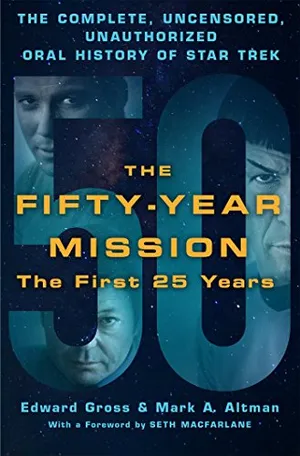
The Fifty-Year Mission: The First 25 Years
"The Fifty-Year Mission" by Edward Gross and Mark A. Altman. Copyright (c) 2016 by the authors and reprinted by permission of Thomas Dunne Books, an imprint of St. Martin’s Press, LLC.
Gene Roddenberry (creator and executive producer, “Star Trek”) I remember myself as an asthmatic child, having great difficulties at 7, 8 and 9 years old, falling totally in love with Tarzan, Lord of the Jungle and dreaming of having his strength to leap into trees and throw mighty lions to the ground.
There was a boy in my class who life had treated badly. He limped, he wheezed. He was a charming, intelligent person. Because of being unable to do many of the things that others were able to do, he had sort of gone into his own world of fantasy and science fiction. He had been collecting the wonderful old Amazing and Astounding magazines, and he introduced me to science fiction. I then discovered in our neighborhood, living above a garage, an ex-con who had come into science fiction when he was in prison. He introduced me to John Carter and those wonderful Burroughs things. By the time I was 12 or 13 I had been very much into the whole science fiction field.
In World War II, Roddenberry served in the U. S. Army Air Corps as a B-17 pilot. He joined the Los Angeles Police Department in 1949, and wrote speeches for Chief William Parker as well as articles for the LAPD newsletter, The Beat. Resigning in 1956, Roddenberry provided scripts to the screenwriter Sam Rolfe, for “Have Gun Will Travel,” the TV western starring Richard Boone. Roddenberry had his first pilot produced by MGM in 1963, for the short-lived NBC series “The Lieutenant.” The studio turned down his pitch for a new series called “Star Trek .” But his agents contacted Desilu Studios, which was looking to produce more dramas after years of success in comedy.
Gene Roddenberry I was tired of writing for shows where there was always a shoot-out in the last act and somebody was killed. “Star Trek” was formulated to change that. I had been a freelance writer for about a dozen years and was chafing at the commercial censorship on television. You really couldn’t talk about anything you cared to talk about. It seemed to me that perhaps if I wanted to talk about sex, religion, politics, make some comments against Vietnam, and so on, that if I had similar situations involving these subjects happening on other planets to little green people, indeed it might get by, and it did.
Dorothy “D.C.” Fontana (writer, “Star Trek” story editor) Gene asked me to read the very first proposal for “Star Trek” in 1964. I said, “I have only one question: Who’s going to play Mr. Spock?” He pushed a picture of Leonard Nimoy across the table.
Gene Roddenberry Leonard Nimoy was the one actor I definitely had in mind—we had worked together previously. I was struck at the time with his high Slavic cheekbones and interesting face, and I said to myself, “If I ever do this science fiction thing, he would make a great alien. And with those cheekbones some sort of pointed ear might go well.” To cast Mr. Spock I made a phone call to Leonard and he came in. That was it.
Leonard Nimoy (actor, “Mr. Spock”) I went in to see Gene at Desilu Studios and he told me that he was preparing a pilot for a science fiction series to be called “Star Trek,” that he had in mind for me to play an alien character. I figured all I had to do was keep my mouth shut and I might end up with a good job here. Gene told me that he was determined to have at least one extraterrestrial prominent on his starship. He’d like to have more, but making human actors into other life-forms was too expensive for television in those days. Pointed ears, skin color, plus some changes in eyebrows and hair style were all he felt he could afford, but he was certain that his Mr. Spock idea, properly handled and properly acted, could establish that we were in the 23rd century and that interplanetary travel was an established fact.
Marc Cushman (author, “ These Are the Voyages ” ) Desilu came into existence because Lucille Ball and Desi Arnaz owned “I Love Lucy.” It was the first time someone owned the rerun rights to a show. Seems like a no-brainer today, but back then no one had done it. Eventually CBS bought the rerun rights back from Lucy and Desi for a million dollars, a lot of money back then. Lucy and Desi take that money and buy RKO and turn it into Desilu Studios. The company grows, but then the marriage falls apart and Lucy ends up running the studio and by this point, they don’t have many shows. Lucy says, “We need to get more shows on the air,” and “Star Trek” was the one she took on, because she thought it was different.
Herbert F. Solow (executive in charge of production, “Star Trek”) I had so many people at the studio, so many old-timers trying to talk me out of it. “You’re going to bankrupt us, you can’t do this. NBC doesn’t want us anyway, who cares about guys flying around in outer space?” The optical guy said it was impossible to do.
Marc Cushman Desi wasn’t there anymore. So Lucy is asking herself, “What would Desi do?” because she really loved and respected him. “Desi would get more shows on the air that we own, not just that we’re producing for other companies.” That was her reasoning to do “Star Trek”—and she felt that this show could, if it caught on, rerun for years like “I Love Lucy.” And guess what? Those two shows—“I Love Lucy” and “Star Trek”—are two shows that have been rerunning ever since they originally aired.
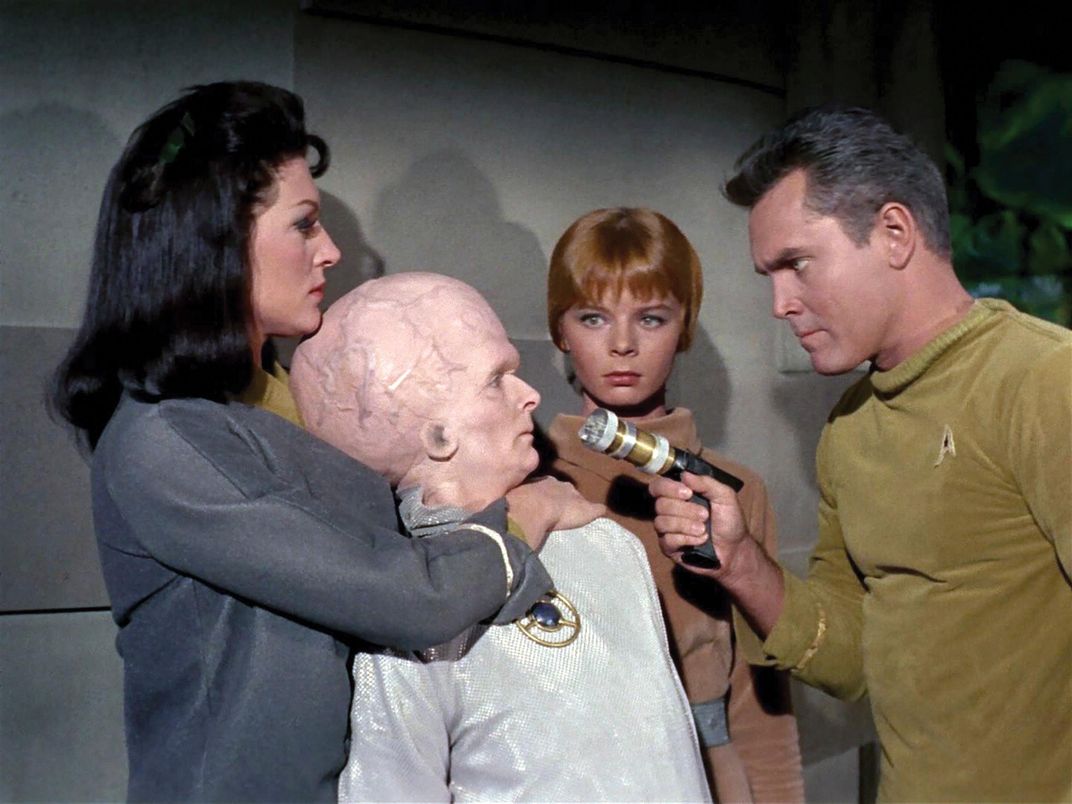
In the teleplay for the first pilot, “The Cage,” starring Jeffrey Hunter as Capt. Christopher Pike, Roddenberry described the establishing shot in detail: “Obviously not a primitive ‘rocket ship’ but rather a true space vessel, suggesting unique arrangements and exciting capabilities. As CAMERA ZOOMS IN we first see tiny lettering ‘NCC 1701- U.S.S. ENTERPRISE . ’”
Walter M. “Matt” Jefferies (production designer, “Star Trek”) I had collected a huge amount of design material from NASA and the defense industry which was used as an example of designs to avoid. We pinned all that material up on the wall and said, “That we will not do.” And also everything we could find on “Buck Rogers” and “Flash Gordon” and said, “That we will not do.” Through a process of elimination, we came to the final design of the Enterprise .
Gene Roddenberry I’d been an Army bomber pilot and fascinated by the Navy and particularly the story of the Enterprise , which at Midway really turned the tide in the whole war in our favor. I’d always been proud of that ship and wanted to use the name.
Roddenberry’s attention to detail even extended to the ship’s computer at a time when computers were punch card–operated behemoths that filled entire rooms. In a memo on July 24, 1964, to production designer Pato Guzman, Roddenberry suggested, “More and more I see the need for some sort of interesting electronic computing machine designed into the USS Enterprise , perhaps on the bridge itself. It will be an information device out of which the crew can quickly extract information on the registry of other space vessels, spaceflight plans for other ships, information on individuals and planets and civilizations.”
Gene Roddenberry The ship’s transporters—which let the crew “beam” from place to place—really came out of a production need. I realized with this huge spaceship, I would blow the whole budget of the show just in landing the thing on a planet. And secondly, it would take a long time to get into our stories, so the transporter idea was conceived so we could get our people down to the planet fast and easy, and get our story going by Page 2.
Howard A. Anderson (visual effects artist, “Star Trek”) For the transporter effect, we added another element: a glitter effect in the dematerialization and rematerialization. We used aluminum dust falling through a beam of high-intensity light.
Though the network had warned the studio not to make the pilot too esoteric— “ Be certain there are enough explanations on the planet, the people, their ways and abilities so that even someone who is not a science fiction aficionado can clearly understand and follow the story,” a 1964 memo said—the network wasn’t satisfied. NBC commissioned another pilot—a rare second chance at being picked up for a series.
Gene Roddenberry The reason they turned the pilot down was that it was too cerebral and there wasn’t enough action and adventure. “The Cage” didn’t end with a chase and a right cross to the jaw, the way all manly films were supposed to end. There were no female leads then—women in those days were just set dressing. So, another thing they felt was wrong was that we had Majel as a female second-in-command of the vessel.
Majel Barrett (actress, "Number One,""Nurse Christine Chapel") NBC felt that my position as Number One would have to be cut because no one would believe that a woman could hold the position of second-in-command.
Gene Roddenberry Number One was originally the one with the cold, calculating, computerlike mind. When we had to eliminate a feminine Number One—I was told you could cast a woman in a secretary’s role or that of a housewife, but not in a position of command over men on even a 23rd-century spaceship—I combined the two roles into one. Spock became the second-in-command, still the science officer but also the computerlike, logical mind never displaying emotion.
Leonard Nimoy Vulcan unemotionalism and logic came into being.Gene felt the format badly needed the alien Spock, even if the price was acceptance of 1960s-style sexual inequality.
The network’s objections to Roddenberry’s Spock included taking exception to the character’s pointed ears, perceived as imparting a vaguely sinister Satanic appearance.
Gene Roddenberry The idea of dropping Spock became a major issue. I felt that was the one fight I had to win, so I wouldn’t do the show unless we left him in. They said, “Fine, leave him in, but keep him in the background, will you?” And then when they put out the sales brochure when we eventually went to series, they carefully rounded Spock’s ears and made him look human so he wouldn’t scare off potential advertisers.
Work on the second pilot, “Where No Man Has Gone Before,” began in 1965. The show aired on September 22, 1966, and featured William Shatner as Capt. James T. Kirk, replacing actor Jeffrey Hunter.
Gene Roddenberry At that time, TV was full of antiheroes, and I had a feeling that the public likes heroes. People with goals in mind, with honesty and dedication, so I decided to go with the straight heroic roles, and it paid off. My model for Kirk was Horatio Hornblower from the C.S. Forester sea stories. Shatner was open-minded about science fiction, and a marvelous choice.
William Shatner (actor, “James T. Kirk”) I talked to Gene Roddenberry about the objectives we hoped to achieve, and one was serious drama as well as science fiction. I felt confident that “Star Trek” would keep those serious objectives for the most part, and it did.
Scott Mantz (film critic, “Access Hollywood”) I’d follow Kirk in a second. Shatner’s performance as Kirk is the reason I became a “Trek” fan.
Leonard Nimoy Bill Shatner’s broader acting style created a new chemistry between the captain and Spock.
William Shatner Captain Kirk and I melded. It may have been only out of the technical necessity; the thrust of doing a television show every week is such that you can’t hide behind too many disguises. You’re so tired that you can’t stop to try other interpretations of a line, you can only hope that this take is good, because you’ve got five more pages to shoot. You have to rely on the hope that what you’re doing as yourself will be acceptable. Captain Kirk is me. I don’t know about the other way around.
James Doohan (actor, “Montgomery ‘Scotty’ Scott”) [A few days] before they were actually going to shoot the second “Star Trek” pilot, the director, Jim Goldstone, called me and said, “Jimmy, would you come in and do some of your accents for these ‘Star Trek’ people?” I had no idea who they were, but I did that on a Saturday morning. They handed me a piece of paper—there was no part there for an engineer, it was just some lines, but every three lines or so I changed my accent and ended up doing eight or nine accents for that reading. At the end, Gene Roddenberry said, “Which one do you like?” I said, “To me, if you want an engineer, he’d better be a Scotsman,” because those were the only engineers I had read anything about—all the ships they had built and so forth. Gene said, “Well, we rather like that, too.”
George Takei (actor, “Hikaru Sulu”) The first time I talked to Gene about “Star Trek,” it was for the second pilot and it was an exhilarating prospect, because almost every other opportunity was either inconsequential or defamatory, and here was something that was a breakthrough for a Japanese-American actor. Until then any regular series roles for an Asian or an Asian-American character were either servants, buffoons or villains.
Alexander Courage (composer, “Star Trek”) When Lucille Ball bought Desilu, Wilbur Hatch came in as head of music. When “Star Trek” came on the scene, Wilbur suggested me to Roddenberry and I turned out a theme. Roddenberry liked it and that was it. He said, “I don’t want any space music. I want adventure music.”
The second pilot became a monumental achievement: It persuaded NBC to greenlight the series.
Gene Roddenberry The biggest factor in selling the second pilot was that it ended up in a hell of a fistfight with the villain suffering a painful death. Then, once we got “Star Trek” on the air, we began infiltrating a few of our ideas, the ideas the fans have all celebrated.
Robert H. Justman (associate producer, “Star Trek”) On the last day of production when we were a day over, we did two days’ work in one day. That’s the day that Lucy came on the stage, because we were supposed to have an end-of-picture party and we were still shooting, so in between setups she helped Herb Solow and me sweep out the stage. I think she just did that for effect, because she wanted to get the party started.
On March 6, 1966, Roddenberry dispatched a Western Union telegram to Shatner at the Hotel Richmond in Madrid: “Dear Bill. Good news. Official pickup today. Our Five Year Mission. Best Regards, Gene Roddenberry.”
Not long after “Star Trek” was launched, the audience embraced Leonard Nimoy’s Spock, and the stoic Vulcan science officer soon threatened to eclipse Captain Kirk. Nimoy came up with a list of demands that resulted in the possibility that the character would be replaced. In the end, Nimoy’s demands were met, and the scripts began focusing on Kirk and Spock as a team. But the sense of competition continued.
Marc Cushman They almost didn’t have Spock for the second season of “Star Trek.” The fan mail got so intense during the first year, sacks and sacks of mail every day. His agent said, “He’s getting only $1,250 a week and he needs a raise.” But Desilu is losing money on the show and the board of directors was thinking of canceling it, even if NBC wanted to continue, because it was bankrupting the studio. The one that broke the stalemate was the one that didn’t want Spock in the first place: NBC. “You are not doing the show without that guy. Pay him whatever you need to pay him.”
David Gerrold (writer, “The Trouble With Tribbles”) The problems with Shatner and Nimoy really began during the first season when Saturday Review did this article about “Trek” which stated that Spock was much more interesting than Kirk, and that Spock should be captain. Well, nobody was near Shatner for days. He was furious . All of a sudden, the writers are writing all this great stuff for Spock, and Spock, who’s supposed to be a subordinate character, suddenly starts becoming the equal of Kirk.

Ande Richardson (assistant to writer Gene L. Coon) Shatner would take every line that wasn’t nailed down. “This should be the captain’s line!” He was very insecure.
Herbert F. Solow The last thing we wanted was to have the network, the sponsors or the television audience feel that it was not a wonderful, marvelous family on “Star Trek.” We didn’t want anybody to see a crack in this dam that we built.
If push came to shove, and we had to recast both characters, it would have been easier to recast Bill’s part than Leonard’s, so you tell me: Who’s the star of the show?
William Shatner Occasionally, I’ll hear something from an ardent fan of mine who’ll say, “So and so said this about you.” And it bewilders me because I have had no trouble with them. We have done our job and gone on and I have never had bad words with anyone.
On August 17, 1967, Roddenberry addressed an ultimatum to Shatner and Nimoy, with DeForest Kelley (Dr. McCoy) thrown in for good measure:
“Toss these pages in the air if you like, stomp off and be angry, it doesn’t mean that much since you’ve driven me to the edge of not giving a damn,” Roddenberry wrote in that letter, excerpted here for the first time: “No, William, I’m not really writing this to Leonard and just including you as a matter of psychology. I’m talking to you directly and with an angry honesty you haven’t heard before. And Leonard, you’d be very wrong if you think I’m really teeing off at Shatner and only pretending to include you. The same letter to both; you’ve pretty well divided up the market on selfishness and egocentricity.
“ Star Trek began as one of the TV productions in town where actors, as fellow professionals, were not only listened to but actually invited to bring their script and series comments to the production office. When small problems and pettiness begins to happen as it happens on all shows, I instructed our people that it should be overlooked where possible because we should all understand the enormous physical and emotional task of your job .... The result of Gene Roddenberry’s policy of happy partnership? Star Trek is going down the drain.
“. . . I want you to realize fully where your fight for absolute screen dominance is taking you. It’s already affecting the image of Captain Kirk on the screen. We’re heading for an arrogant, loud, half-assed Queeg character who is so blatantly insecure upon that screen that he can’t afford to let anyone else have an idea, give an order, or solve a problem. You can’t hide things like that from an audience.
“And now, Leonard. I must say that if I were Shatner, I’d be nervous and edgy about you by now, too. For a man who makes no secret of his own sensitivity, you show a strange lack of understanding of it in your fellow actors.
“For as long as I stay with the show, starting Monday,” Roddenberry decreed, “there will be no more line switches from one to anothe r . No more of the long discussions about scenes which lose us approximately a half day of production a show—the director will permit it only when there is a valid dramatic story or interpretation point at stake which he believes makes it necessary. The director will be told he is also replaceable and failure to stay on top and in charge of the set will be grounds for his dismissal.
“All right, my three former friends and ‘unique professionals,’ that’s it. In straight talk.”
David Gerrold All the episodes hold together because Shatner holds it together. Spock is only good when he has someone to play off of. Spock working with Kirk has the magic and it plays very well, and people give all of the credit to Nimoy, not to Shatner.
Leonard Nimoy During the series we had a failure—I experienced it as a failure—in an episode called “The Galileo Seven.” The Spock character had been so successful that somebody said, “Let’s do a show where Spock takes command of a vessel.” We had this shuttlecraft mission where Spock was in charge. I really appreciated the loss of the Kirk character for me to play against. The Bill Shatner Kirk performance was the energetic, driving performance, and Spock could kind of slipstream along and offer advice, give another point of view. Put into the position of being the driving force, the central character, was very tough for me.
Thomas Doherty (professor of American studies, Brandeis University) At the core of “Star Trek” is something profound, which is teamwork and adventure and tolerance. That’s why it’s a World War II motif in the space age. It really is a team; you’re making a heroic contribution by doing your bit.
At the beginning of the second season, several changes greeted viewers. Not only was DeForest Kelley’s name now added to the opening credits, there was a new face at the helm: Navigator Pavel Andreievich Chekov, played by Walter Koenig.
Gene Roddenberry The Russians were responsible for the Chekov character. They put in Pravda that, “Ah, the ugly Americans are at it again. They do a space show, and they forget to include the people who were in space first.” And I said, “My God, they’re right.”
Walter Koenig (actor, “Pavel Chekov”) They were looking for someone who would appeal to the bubblegum set. All that stuff about Pravda , that’s all nonsense. That was all just publicity. They wanted somebody who would appeal to 8- to 14-year-olds and the decision was to make him Russian. My fan mail came from 8- to 14-year-olds who weren’t that aware of the cold war. Getting fan mail was so novel to me that I read every single letter I got. I was getting about 700 letters a week.
Robert H. Justman We had another problem in the second season. We were cut down on how much we could spend per show by a sizable amount of money.
Marc Cushman Lucille Ball lost her studio because of “Star Trek.” She had gambled on the show, and you can read the memos where her board of directors is saying, “Don’t do this show, it’s going to kill us.” But she believed in it. She moved forward with it, and during the second season she had to sell Desilu to Paramount Pictures. Lucille Ball gave up the studio that she and her husband built, it’s all she had left of her marriage, and she sacrificed that for “Star Trek.”
Ralph Senensky (director, “Metamorphosis”) Desilu was like a family. Herb Solow [the production head] used to come down and talk with you on the soundstage. Herb went out of his way to help you. Can you imagine a studio working like that? When Paramount bought it, a kind of corporate mentality took over. That’s why I resent Paramount having such a hit in “Star Trek.” If they had their way, they would have killed it off. It survived in spite of them. Now they have this bonanza making them all of this money.
Marc Cushman Lucy’s instincts were right about “Star Trek,” that it would become one of the biggest shows in syndication ever. The problem was that her pockets weren’t deep enough. They were losing $15,000 an episode, which would be like $500,000 per episode today. You know, if she could have hung on just six months longer, it would have worked out, because by the end of the second season, once they had enough episodes, “ Star Trek” was playing in, I believe, 60 different countries around the world. And all of that money is flowing in.
She had no choice but to sell. She actually took off and went to Miami. She ran away because it was so heartbreaking to sign the contract. They had to track her down to get her to do it. There’s a picture of her cutting the ribbon after they’ve torn down the wall between Paramount and Desilu, and she’s standing next to the CEO of Gulf and Western, which owns both studios now, and she’s trying to fake this smile for the camera, and you know it’s just killing her.
Among the now-classic episodes in Season 2 of the original are “Amok Time,” in which Spock is driven to return to Vulcan to mate or die and finds himself in a battle to the death with Kirk.
Joseph Pevney (director, “Amok Time”) What made the fight in “Amok Time” dramatically interesting is that it took place between Kirk and Spock. During this episode, Leonard Nimoy and I also worked out the Vulcan salute and the statement “live long and prosper” together.
Gene Roddenberry Leonard Nimoycame into my office and said, “I feel the need for a Vulcan salutation, Gene,” and he showed it to me. Then he told me a story about when he was a kid in synagogue. The rabbis said, “Don’t look or you’ll be struck dead or blind,” but Leonard looked and, of course, the rabbis were making that Vulcan sign. The idea of my Southern kinfolk walking around giving each other a Jewish blessing so pleased me that I said, “Go!”
Joseph Pevney “The Trouble With Tribbles” was a delightful show. I had a lot of fun with it, went out and shopped for the tribbles. My biggest contribution was getting the show produced, because there was a feeling that we had no business doing an outright comedy. Bill Shatner had the opportunity to do the little comic bits he loves.
Season 2 also featured visits to a number of Earthlike planets, including one where the society mirrored the Roman Empire.
Ralph Senensky Gene Roddenberry is a very creative man. When we did “Bread and Circuses,” we were doing the Roman arena in modern times with television. We didn’t want to tip that we were doing a Christ story from the word go. Originally when they were talking about the sun, you knew right away that they were talking about the son of God.
Dorothy “D.C.” Fontana Certainly there was a nice philosophy going on there with the worshiping of the “sun,” and then the indication that it was the son of God, that Jesus or the concept had appeared on other planets.
The series was not a ratings powerhouse. Indeed, it seemed that Season 2 could very well be the show’s last. The future was in the hands of the fans.
Bjo & John Trimble (longtime fans) Cancellation was certain at the end of the second season. We wrote up a preliminary letter, ran it off on our ancient little mimeograph machine, and mailed it out to about 150 science fiction fans. We didn’t have enough money to have a letter printed, so we used the Rule of Ten: Ask ten people to write a letter and they ask ten people to write a letter, and each of those ten asks ten people to write a letter.
NBC was convinced that “Star Trek” was watched only by drooling idiot 12-year-olds. They managed to ignore the fact that people such as Isaac Asimov and a multitude of other intellectuals enjoyed the show. So, of course, the suits were always looking for reasons to cancel shows they didn’t trust to be a raging success.
Elyse Rosenstein (early organizer of “Star Trek” conventions) Do you realize how many pieces of mail NBC eventually received on “Star Trek”? They usually got about 50,000 for the year on everything, but the “Star Trek” campaign generated one million letters. They were handling the mail with shovels—they didn’t know what to do with it. So they made an unprecedented on-air announcement that they were not canceling the show and that it would be back in the fall.
Gene Roddenberry The letter-writing campaign surprised me. What particularly gratified me was not the fact that there was a large number of people who did that, but I got to meet and know “Star Trek” fans, and they range from children to presidents of universities.
John Meredyth Lucas (producer; writer, “Patterns of Force”) Some of the most fanatic support came from Caltech.
Gene Roddenberry We won the fight when the show got picked up for a third season. NBC was certain I was behind every fan, paying them off. And they finally called me up and said, “Listen, we know you’re behind it.” And I said, “That’s very flattering, because if I could start demonstrations around the country from this desk, I’d get the hell out of science fiction and into politics.”
“Star Trek” concluded its second season on a high note, with NBC essentially acknowledging the success of the fans’ letter-writing campaign by announcing that the series would be returning.
Gene Roddenberry I told NBC that if they would put us on the air as they were promising—on a weeknight at a decent time slot, 7:30 or 8 o’clock—I would commit myself to produce “Star Trek” for the third year. Personally produce the show as I had done at the beginning. About ten days or two weeks later, I received a phone call at breakfast, and the network executive said, “Hello, Gene, baby . . .” I knew I was in trouble right then. He said, “We have had a group of statistical experts researching your audience, and we don’t want you on a weeknight at an early time. We have picked the best youth spot that there is. All our research confirms this and it’s great for the kids and that time is 10 o’clock on Friday nights.” I said, “No doubt this is why you had the great kiddie show ‘The Bell Telephone Hour’ on there last year.” As a result, the only gun I then had was to stand by my original commitment, that I would not personally produce the show unless they returned us to the weeknight time they promised.
David Gerrold Roddenberry, rather than try and do the very best show possible, walked away and picked Fred Freiberger [as the producer]. I wish Roddenberry had been there in the third season to take care of his baby.
Marc Cushman NBC didn’t like Gene Roddenberry, and they didn’t like the type of shows that “Star Trek” was airing. It was too controversial and too sexy, and they couldn’t get Roddenberry to tone it down. So they move it to Friday night—they didn’t even want to pick it up, but there was the letter-writing campaign that made them cry uncle. They put it in the death slot. And they knew when they picked it up that they were determined that Season 3 would be the last year.
Robert H. Justman If your audience is high-school kids and college-age people and young married people, they’re not home Friday nights. They’re out, and the old folks weren’t watching. So our audience was gone.
Margaret Armen (writer, “The Paradise Syndrome”) Working with Gene was marvelous, because he was “Star Trek” and he related to the writers. Fred came in and to him “Star Trek” was “tits in space.” And that’s a direct quote. Fred had been signed to produce and was being briefed. He watched an episode with me, smoking a big cigar, and said, “Oh, I get it. Tits in space.” You can imagine how a real “Star Trek” buff like myself reacted to that .
Fred Freiberger (producer, “Star Trek,” Season 3) Our problem was to broaden the viewer base. To do a science fiction show, but get enough additional viewers to keep the series on the air. I tried to do stories that had a more conventional story line within the science fiction frame.
Marc Cushman You had some of the most talented people from “ Star Trek” that were leaving. You didn’t have Gene Coon, Gene Roddenberry or Dorothy Fontana finessing the scripts. It’s like having the Beatles and taking away John Lennon and Paul McCartney. “OK, we still have George and Ringo. We’re still the Beatles.” No, you’re not. You’re still good, but not as good.
James Doohan Fred Freiberger had no inventiveness in him at all. Paramount bought Desilu and here was this damn space show as part of the package and they couldn’t care less about it.
William Shatner There was a feeling that a number of Fred Freiberger’s shows weren’t as good as the first and second season, and maybe that’s true. But he did have some wonderfully brilliant shows and his contribution has never been acknowledged.
Bjo & John Trimble The third season ground down, show after show being worse than the last, until even the authors of the scripts were having their names removed or using pseudonyms. To be fair, there were a few good scripts in the third season, but in the main those few seemed to be almost mistakes that slipped by.
While the third year of “ Star Trek” has largely been dismissed as a creative failure, several notable episodes were produced. “Spectre of the Gun” is a surrealistic western in which Kirk, Spock and McCoy find themselves reliving the shootout at the O.K. Corral. “Day of the Dove” focuses on an energy force that feeds on hatred. In “Plato’s Stepchildren,” aliens with telekinetic abilities torture Enterprise crewmen for their amusement—and Kirk and Uhura share television’s first interracial kiss.
Bjo & John Trimble The last third-season episode, “Turnabout Intruder,” was very good; it might have won an Emmy for William Shatner. But all TV shows got rescheduled for President Eisenhower’s funeral coverage. So the episode missed the Emmy-nomination deadline.
Scott Mantz That’s how production ended. There is something somewhat apropos about the last words of the last episode, “Turnabout Intruder”: “Her life could have been as rich as any woman’s. If only...If only.” And then Kirk walks off.
Get the latest Travel & Culture stories in your inbox.
Edward Gross and Mark A. Altman | READ MORE
Both considered "Treksperts" with years of experience writing about Star Trek, Edward Gross and Mark A. Altman are the authors of The Fifty-Year Mission: The Complete, Uncensored, Unauthorized Oral History of Star Trek: The First 25 Years .

- April 12, 2024 | Podcast: All Access Goes To Trill With ‘Star Trek: Discovery’ For “Jinaal”
- April 11, 2024 | Paramount Pictures Officially Confirms Star Trek Origin Movie For Its Upcoming Film Slate
- April 11, 2024 | Japan’s Prime Minister Invokes Star Trek In White House State Dinner Toast
- April 11, 2024 | Recap/Review: ‘Star Trek: Discovery’ Tries Too Many Connections In “Jinaal”
- April 10, 2024 | ‘Star Trek: Discovery’ Season 5 Preview Offers Intriguing Clues And The Return To [SPOILERS]
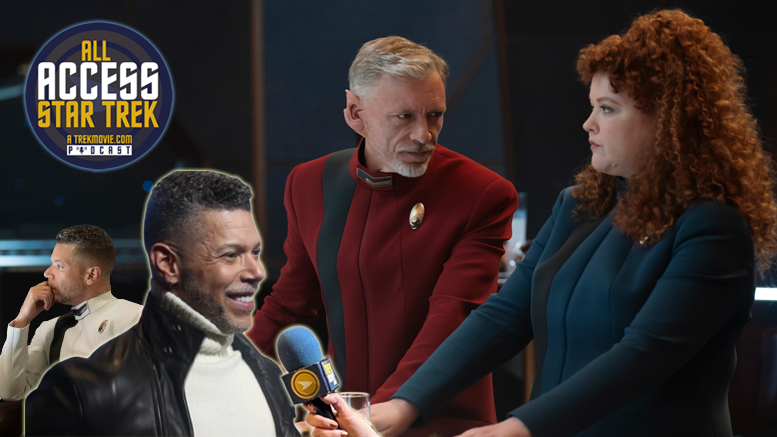
All Access Star Trek Podcast , Discovery | April 12, 2024 | By: All Access Star Trek Pod Team 3 comments so far
Podcast: All Access Goes To Trill With ‘Star Trek: Discovery’ For “Jinaal”
Tony and Laurie also cover the latest in the Paramount/Skydance talks and give an update on the Star Trek prequel movie.
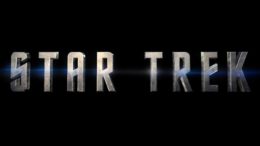
Star Trek Origin Movie , Upcoming movies | April 11, 2024 | By: Anthony Pascale 158 comments so far
Paramount Pictures Officially Confirms Star Trek Origin Movie For Its Upcoming Film Slate
The announcement was part of the studio’s CinemaCon event in Las Vegas.
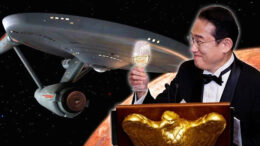
Great Links , TOS , Trek Franchise | April 11, 2024 | By: TrekMovie.com Staff 2 comments so far
Japan’s Prime Minister Invokes Star Trek In White House State Dinner Toast
George Takei also got a shoutout from Japanese Prime Minister Fumio Kishida.
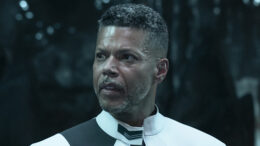
Discovery , Review | April 11, 2024 | By: Anthony Pascale 50 comments so far
Recap/Review: ‘Star Trek: Discovery’ Tries Too Many Connections In “Jinaal”
Captain Burnham, Book, and Culber must pass a dangerous test to prove themselves worthy of the next clue.
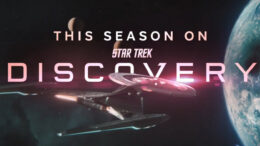
Analysis , Discovery | April 10, 2024 | By: TrekMovie Editors 15 comments so far
‘Star Trek: Discovery’ Season 5 Preview Offers Intriguing Clues And The Return To [SPOILERS]
We do the freeze-framing so you don’t have to.

Discovery , Starfleet Academy | April 10, 2024 | By: TrekMovie.com Staff 39 comments so far
Mary Wiseman Really Doesn’t Want To Talk About Tilly Returning On ‘Star Trek: Starfleet Academy’
The ‘Academy’ show starts filming this summer.
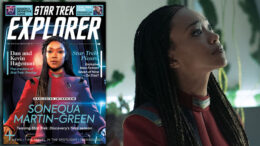
Discovery , Magazine | April 9, 2024 | By: TrekMovie.com Staff 44 comments so far
Sonequa Martin-Green Talks About Exhausting Last Day On Set For ‘Star Trek: Discovery’
The star was interviewed in the new ‘Star Trek: Explorer’ magazine, out today.

Collectibles , DS9 , Review | April 9, 2024 | By: Jeff Bond 7 comments so far
Review: The EXO-6 ‘Star Trek: Deep Space Nine’ 1:6 Odo Figure Is The Shape of Things To Come
The latest DS9 figure was released today.
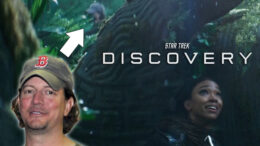
Discovery | April 9, 2024 | By: TrekMovie.com Staff 8 comments so far
‘Star Trek: Discovery’ Director Fesses Up To Unplanned Cameo In Episode 502
Director Doug Aarniokoski explains how he ended up in the alien jungle.
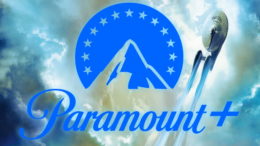
CBS/Paramount , Trek Franchise | April 8, 2024 | By: Anthony Pascale 34 comments so far
Skydance Reportedly Looking To “Supercharge” Paramount+, Potentially Merge It With Another Streamer
The streaming home of Star Trek looks likely to survive a merger with Skydance, but with some big changes.
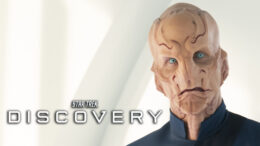
Discovery | April 8, 2024 | By: TrekMovie.com Staff 55 comments so far
Preview ‘Star Trek: Discovery’ Episode 503 With New Images And Clip From “Jinaal”
The episode arrives on Thursday, April 11.
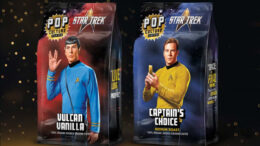
Collectibles , Star Trek: Picard , TOS | April 7, 2024 | By: TrekMovie.com Staff 27 comments so far
Star Trek Coffees Launching In May With Several Blends
This week’s merch roundup also includes an update on collector’s cards and DVDs.
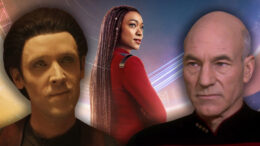
Discovery , TNG | April 6, 2024 | By: Anthony Pascale 64 comments so far
‘Star Trek: Discovery’ Showrunner Explains Why They Reopened A TNG Mystery To Start Season 5
Michelle Paradise talks to TrekMovie about SPOILERS from the ‘Discovery’ season 5 premiere.
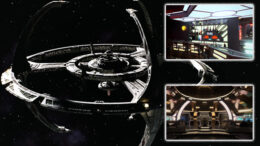
Discovery , DS9 , Merchandise | April 5, 2024 | By: TrekMovie.com Staff 19 comments so far
Roddenberry Archive Expands With Virtual Tours Of Deep Space 9 Station And The USS Discovery
Watch a tour of DS9 narrated by Armin Shimerman.
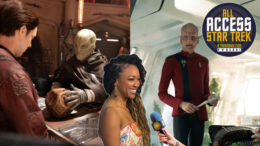
All Access Star Trek Podcast , Discovery , Section 31 | April 5, 2024 | By: All Access Star Trek Pod Team 14 comments so far
Podcast: All Access Reviews The First Two Episodes Of ‘Star Trek: Discovery’ Season 5
Matt from the ‘Shuttle Pod’ joins Tony and Laurie this week.
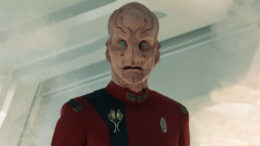
Discovery , Review | April 4, 2024 | By: Anthony Pascale 72 comments so far
Recap/Review: ‘Star Trek: Discovery’ Embraces Second Chances In “Under The Twin Moons”
The team ventures to a seemingly abandoned planet to hunt for what might be the greatest treasure in the galaxy.
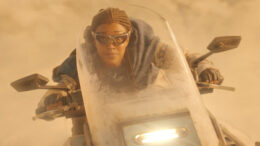
Discovery , Review | April 4, 2024 | By: Anthony Pascale 96 comments so far
Recap/Review: ‘Star Trek: Discovery’ Returns With New Vitality And A Lore-Fueled Quest In “Red Directive”
Captain Burnham and the crew of the U.S.S. Discovery are sent to retrieve a mysterious artifact.
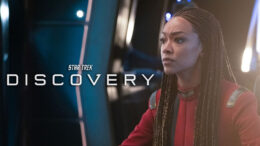
Discovery | April 4, 2024 | By: TrekMovie.com Staff 19 comments so far
Watch The ‘Star Trek: Discovery’ Season 5 Premiere For Free On YouTube In USA
“Red Directive” available for free on same day it debuts on Paramount+
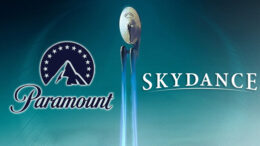
CBS/Paramount | April 3, 2024 | By: Anthony Pascale 40 comments so far
Paramount Reportedly Close To A Deal With Skydance
The co-producers of the last two Star Trek movies could be taking over the whole thing.
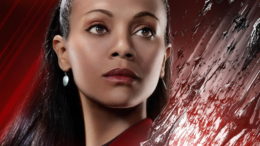
Star Trek 4 | April 3, 2024 | By: TrekMovie.com Staff 41 comments so far
Zoe Saldana Is Still Holding Out Hope For ‘Star Trek 4’
The actress calls her three previous Trek films “a wonderful experience.”
- Today's news
- Reviews and deals
- Climate change
- 2024 election
- Fall allergies
- Health news
- Mental health
- Sexual health
- Family health
- So mini ways
- Unapologetically
- Buying guides
Entertainment
- How to Watch
- My watchlist
- Stock market
- Biden economy
- Personal finance
- Stocks: most active
- Stocks: gainers
- Stocks: losers
- Trending tickers
- World indices
- US Treasury bonds
- Top mutual funds
- Highest open interest
- Highest implied volatility
- Currency converter
- Basic materials
- Communication services
- Consumer cyclical
- Consumer defensive
- Financial services
- Industrials
- Real estate
- Mutual funds
- Credit cards
- Credit card rates
- Balance transfer credit cards
- Business credit cards
- Cash back credit cards
- Rewards credit cards
- Travel credit cards
- Checking accounts
- Online checking accounts
- High-yield savings accounts
- Money market accounts
- Personal loans
- Student loans
- Car insurance
- Home buying
- Options pit
- Investment ideas
- Research reports
- Fantasy football
- Pro Pick 'Em
- College Pick 'Em
- Fantasy baseball
- Fantasy hockey
- Fantasy basketball
- Download the app
- Daily fantasy
- Scores and schedules
- GameChannel
- World Baseball Classic
- Premier League
- CONCACAF League
- Champions League
- Motorsports
- Horse racing
- Newsletters
New on Yahoo
- Privacy Dashboard
Everything we know about Star Trek 4
Will captain kirk and co return for one more outing.
It looks like the only thing trickier than surviving a mission into deep space is getting all of your starships in a row long enough to send Star Trek 4 speeding into production.
The last time we saw Captain James T. Kirk and his pointy-eared pal Spock in action was in 2016 threequel Star Trek Beyond . Ever since then, updates on their next adventure have been sporadic at best, with news of stand-alone spin-offs from critically acclaimed talent and even a new prequel story drifting in and out of focus like passing asteroids.
Multiple writers and directors have boarded Star Trek 4 only to hit eject before any meaningful progress has been made, leaving this sci-fi tentpole franchise lost in space. However, a promising new update suggests that the crew of the USS Enterprise could be gearing up for a new mission in the not-too-distant future.
With that in mind, here’s everything we know about Star Trek 4 so far…
When will Star Trek 4 be released?
Star Trek 4 is currently without a release date. In fact, the film hasn’t even entered production so we’ll likely have to wait a few years before we can see the Enterprise crew back on the big screen.
What is the plot of Star Trek 4?
As it stands, we don’t have any details of what adventure Star Trek 4 will send audiences on. That said, we do know that the fourth film in the franchise is set to be the final outing for this particular chapter of the Star Trek story that J.J. Abrams started in 2009.
To say that Star Trek 4 has had a long and varied gestation process so far is a bit of an understatement. Initially, talk of a fourth film began before the release of its predecessor Star Trek Beyond and not long afterwards, auteur filmmaker Quentin Tarantino was reported to have pitched his own idea to Abrams in 2017.
This new take on the Star Trek story was being developed separately from Abrams’ primary universe and was reported to have an R-rated tone thanks to its violence and language. Despite gathering a group of writers to work on the project, Tarantino’s Star Trek ultimately hasn’t come to fruition just yet.
Madame Web helmer S.J. Clarkson was the next person to be hired to direct but dropped off of the film when negotiations surrounding the return of Kirk star Chris Pine and his on-screen father Chris Hemsworth fell apart.
Fargo’s Noah Hawley was then enlisted to take the franchise forward in a new direction that would’ve been starkly different from what had come before but involved the franchise’s same ensemble cast however his plans fell apart too, leading him to start work on the new Alien series instead.
Prison Break writer Kalinda Vazquez was the next person to be linked to Star Trek 4 before she was replaced by It’s Always Sunny in Philadelphia’s long-time director Matt Shankman. He was set to direct a new story written by Pet Sematary: Bloodlines scribe Lindsay Beer and Geneva Robertson-Dworet, writer of 2018’s Tomb Raider reboot.
Unfortunately, cast negotiations dragging on hampered the development process and it wasn’t long before Shakman left the project to tackle Marvel’s Fantastic Four reboot instead. Despite this, Beer offered an update in September 2023 that suggested that her and Robertson-Dworet’s story was still in active development.
“It's still on the tracks,” Beer told Collider . “I love that project, and it was another one that I had to hop off of to direct [Pet Sematary: Bloodlines], and that was a hard thing to do. But I love everybody involved with that project.”
The franchise experienced some promising signs of life in March 2024 when The Flight Attendant screenwriter Steve Yockey was enlisted by Bad Robot and Paramount Pictures to write a new Star Trek 4 script. While story details are non-existent, it’s believed that Yockey’s story is still planned to be the final outing for Abrams’ crew.
Will there be a Star Trek prequel movie?
Yes, a stand-alone Star Trek prequel movie is also in development from Abrams’ Bad Robot production company.
Set decades before the 2009 Star Trek reboot, the project is described as an origin story that will be written by Abraham Lincoln: Vampire Hunter's Seth Grahame-Smith and Andor director Todd Haynes.
Who will be starring in Star Trek 4?
If Star Trek 4 does finally come together, the project will have to reunite the crew of the USS Enterprise. That includes Pine’s Captain James Kirk, Zachary Quinto’s Spock, Karl Urban’s Dr. Leonard “Bones” McCoy, Zoe Saldana’s Nyota Uhura, Simon Pegg’s Montgomery “Scotty” Scott and John Cho’s Hikaru Sulu.
Pavel Chekov star Anton Yelchin tragically passed away following a freak accident in 2016 and it is unclear how the sequel might address his absence.
Bringing the movie’s crew together on deck might be harder than it sounds, with Quinto recently describing the process as “complicated.”
“I think there’s a lot of other stuff, creative things,” he said during a convention appearance in summer 2023. “The fact that anything good gets made is kind of miracle.
“I think it’s about different people having different agendas and ideas about what it will be. And I don’t know if and when it will happen... And if it coalesces again and we come back and we're able to do it, wonderful. If not, we had a great run.”
Meanwhile, Pine has also shared his frustrations surrounding delays and being able to see up-to-date scripts. He even called the sequel “cursed” following its trouble getting off the ground.
“After the last one came out and didn't do the $1 billion that everyone wanted it to do, and then Anton [Yelchin] passed away, I don't know. It just... feels like it’s cursed,” he told Esquire .
“I know costume designers that have read scripts before the actors. I would say it's frustrating. It doesn't really foster the greatest sense of partnership, but it's how it's always been. I love the character. I love the people. I love the franchise. But to try to change the system in which things are created – I just can'’ do it. I don’t have the energy.”
Speaking to ComicBook.com in January 2024, Saldana said she would be “grateful” for one more outing with her galaxy exploring colleagues.
“I mean, I heard what you heard in the trades. I just heard they’re gearing up to do a new one with a younger, sort of, take on it... I don't know if it’s from the before or the after, but that they really still hope to grab all of us veterans and bring us back for one last round.”
“Listen, I know it’s a lot to wrangle a whole bunch of people with busy schedules,” she added. “But working with J.J. Abrams, and for J.J. Abrams at Bad Robot, was always just a wonderful and beautiful experience for me. So, if I get to do that one last time, I would be so grateful.”
Saldana reiterated these thoughts during a chat with The Discourse podcast in April 2024, saying “I still have hope”. She added that Star Trek “should live for a very long time, whether or not us as the original remake cast can come back. I don’t know, but I certainly hope so.”
If the crew of the USS Enterprise manage to get their act together, only then can then start to discuss who might be playing their new big-bad plus anyone else who may return – or be introduced – in Star Trek 4.
Is there a trailer for Star Trek 4?
Unfortunately, there’s no trailer or footage available for Star Trek 4 just yet.
Star Trek 4 is still in development.
Recommended Stories
'sasquatch sunset' is so relentlessly gross that people are walking out of screenings. star jesse eisenberg says the film was a ‘labor of love.’.
“There are so many movies made for people who like typical things. This is not that," the film's star told Yahoo Entertainment.
Kentucky taking massive gamble hiring an unproven coach in Mark Pope
Kentucky athletic director Mitch Barnhart’s stunning decision to hire Mark Pope raises an obvious question: Is this really the best Kentucky could do?
O.J. Simpson dead at 76 after battle with cancer, family announces
O.J. Simpson, one of the most infamous figures in U.S. history, had been battling cancer.
Scott Boras loses Jordan Montgomery as client after super-agent's disaster offseason
Boras reportedly demanded at least $170 million for Montgomery. The pitcher ended up getting $25 million.
2024 NBA Mock Draft 6.0: Projections for every pick following March Madness
With the NCAA tournament behind us, here's an updated look at Yahoo Sports' first- and second-round projections for the 2024 NBA Draft.
2025 Toyota 4Runner (finally!) revealed, and the new Trailhunter is extremely cool
The 2025 Toyota 4Runner is finally arriving this fall with a full lineup including returning TRD Pro and new Trailhunter. Hybrid power now available.
Republicans (?!?) are killing a tax cut
In a flip of the usual priorities, Senate Republicans seem likely to kill a set of tax cuts that have already passed the House and are broadly popular. Here's why.
2024 NBA Awards: Official picks for MVP, Rookie of the Year and every individual honor
With the 2023-24 NBA season coming to an end, here's one voter's award ballot, breaking down the top candidates — and declaring the winners.
2024 NFL Draft guide: 32 teams, 32 needs, picks, best fits and more
What selections does your team have? What areas should it address? Who's the dream fantasy pick? We cover all that and more for every franchise right here.
2025 Toyota 4Runner vs Land Cruiser vs the old 4Runner: How they compare
The 2025 Toyota 4Runner looks like it'll be a clear improvement to its predecessor. Though looking at the specs, it may pose a problem for the Land Cruiser
Why ‘Star Trek: Discovery’ Built Season 5 Around a Classic Episode From a Legacy Series
By Adam B. Vary
Adam B. Vary
Senior Entertainment Writer
- ‘Teenage Mutant Ninja Turtles’ Getting Bloody, Live-Action Film ‘The Last Ronin’ 1 day ago
- Why ‘Star Trek: Discovery’ Built Season 5 Around a Classic Episode From a Legacy Series 1 week ago
- ‘Star Trek: Discovery’ Star Sonequa Martin-Green on the Show’s Unexpected Final Season, the ‘Pressure’ of Representation and Taking the ‘Trek’ Cruise 1 week ago

SPOILER ALERT: This story discusses major plot developments in Season 5, Episode 1 of “ Star Trek : Discovery,” now streaming on Paramount+.
Popular on Variety
Kovich’s explanation evokes the classic “ Star Trek: The Next Generation ” episode “The Chase” from 1993 in which Capt. Jean-Luc Picard (Patrick Stewart) — along with teams of Romulans, Klingons and Cardassians — learn that all humanoid life in the galaxy was created by a single species that existed billions of years earlier, and seeded thousands of planets with the DNA to pass along their legacy. (Along with presenting a profound vision of the origins of life, the episode also provided an imaginative explanation for why almost all the aliens in “Star Trek” basically look like humans with different kinds of forehead ridges.)
Kovich tells Burnham that the Romulan scientist was part of a team sent to discover exactly how these aliens — whom they call the Progenitors — made this happen; the object they’re seeking winds up being one part of a brand new “chase,” this time in the 32nd century, to find the Progenitors’ technology before it can fall into the wrong hands.
“I remember watching that episode and at the end of it just being blown away that there was this huge idea where we all come from,” Paradise says. “And then they’re going to have another mission the next week. I found myself wondering, ‘Well, then what? What happened? What do we do with this information? What does it mean?’”
Originally, Paradise says the “Discovery” writers’ room discussed evoking the Progenitors in Season 4, when the Discovery meets an alien species, the 10-C, who live outside of the galaxy and are as radically different from humans as one could imagine. “As we dug deeper into the season itself, we realized that it was too much to try and get in,” Paradise says.
Instead, they made the Progenitors the engine for Season 5. “Burnham and some of our other characters are on this quest for personal meaning,” Paradise says. Searching for the origins of life itself, she adds, “feels like a big thematic idea that fits right in with what we’re exploring over the course of the season, and what our characters are going through.”
That meant that Paradise finally got to help come up with the answers to the questions about “The Chase” that had preoccupied her when she was younger. “We had a lot of fun talking about what might’ve happened when [Picard] called back to headquarters and had to say, ‘Here’s what happened today,’” she says. “We just built the story out from there.”
More From Our Brands
Future and metro boomin tap j. cole for ‘we still don’t trust you’ despite apparent diss, home of the week: this $33 million home resides in rolls-royce’s former london headquarters, diamond’s request for extension in bankruptcy rankles nba, nhl, the best loofahs and body scrubbers, according to dermatologists, the talk ending with season 15 at cbs, verify it's you, please log in.
When does the final season of 'Star Trek: Discovery' come out? Release date, cast, where to watch

It's time for U.S.S. Discovery's final mission.
Paramount+'s hit TV series "Star Trek: Discovery" is returning for its fifth and final season this week and there is a lot to look forward to.
"The fifth and final season will find Captain Burnham and the crew of the U.S.S. Discovery uncovering a mystery that will send them on an epic adventure across the galaxy to find an ancient power whose very existence has been deliberately hidden for centuries," says Paramount+ about the upcoming season. "But there are others on the hunt as well…dangerous foes who are desperate to claim the prize for themselves and will stop at nothing to get it."
"Star Trek: Discovery" debuted in 2017 and is the seventh in the Star Trek series. Here's everything you need to know about the final season of the series.
When does 'Star Trek: Discovery' Season 5 premiere?
The finale season of "Star Trek: Discovery" is scheduled to premiere on Paramount+ on Thursday, April 4.
The first two episodes will be available to stream on the premiere date, with new episodes dropping weekly on Thursdays. Paramount+ did not specify what time the episodes will be available on their platform.
'Star Trek: Discovery' on Paramount+: Subscribe
Kenneth Mitchell: 'Star Trek: Discovery' actor, dies after battle with ALS
'Star Trek: Discovery' Season 5 episodes
Season 5 of "Star Trek: Discovery" has 10 episodes in total. The first two will be available to stream on April 4, with the remaining dropping weekly on Thursday on Paramount+.
'Star Trek: Discovery' Season 5 cast
Season 5 of "Star Trek: Discovery" brings back new and old faces along with recurring guest stars. Cast members include:
- Sonequa Martin-Green as Captain Michael Burnham
- Doug Jones as Saru
- Anthony Rapp as Paul Stamets
- Mary Wiseman as Sylvia Tilly
- Wilson Cruz as Dr. Hugh Culber
- David Ajala as Cleveland “Book” Booker
- Blu del Barrio as Adira
- Callum Keith Rennie as Rayner.
- Elias Toufexis as L’ak
- Eve Harlow as Moll
'Star Trek: Discovery' Season 5 trailer
Paramount+ dropped the official trailer for Season 5 on Feb. 23.
Saman Shafiq is a trending news reporter for USA TODAY. Reach her at [email protected] and follow her on X, the platform formerly known as Twitter @saman_shafiq7.
Screen Rant
Star trek origin movie officially announced by paramount for 2025 release.
Paramount Pictures officially announces the next Star Trek movie at CinemaCon, which will arrive in movie theaters in 2025.
- Paramount Pictures announces new Star Trek movie for 2025, directed by Toby Haynes and written by Seth Grahame-Smith.
- Chris Pine-led Star Trek 4 remains in development, while the new film is an origin story set decades before Abrams' 2009 movie.
- Alongside the Star Trek origin movie, Paramount reveals a packed slate of exciting films for 2025-26 at CinemaCon in Las Vegas.
Paramount Pictures officially announces the next Star Trek movie, which is scheduled to arrive in theaters in 2025. As reported in January, the next Star Trek movie isn't the long-delayed, Chris Pine-led Star Trek 4 produced by J.J. Abrams, which remains in development at Paramount. Rather, the next Star Trek movie is an origin story directed by Toby Haynes ( Star Wars: Andor ) and written by Seth Grahame-Smith (A braham Lincoln: Vampire Hunter ).
Screen Rant' s Rob Keyes (@rob_keyes) is at CinemaCon in Las Vegas where Paramount Pictures confirmed the next Star Trek movie , currently called Untitled Star Trek Origin Story , to be released in 2025. J.J. Abrams is also producing Untitled Star Trek Origin Story, which takes place decades before Abrams' Star Trek 2009 movie. See Rob Keyes' Tweet below:
Paramount also confirmed Untitled Star Trek Origin Story will begin production later this year for theatrical release in 2025.
Every Upcoming Star Trek Movie & TV Show
Star trek's new movies in theaters and paramount plus explained, star trek is finally making movies again.
After nearly a decade, Star Trek i s back to making movies. Star Trek on Paramount+ has created a television renaissance for the franchise, but the theatrical side of Star Trek overseen by Paramount Pictures has languished in development hell since Star Trek Beyond bowed in the summer of 2016. Toby Haynes' Untitled Star Trek Origin Story is yet another prequel, but as it's said to be set decades before Star Trek 2009, it could very well be set after Star Trek: Enterprise 's mid-22nd century voyages but otherwise be an origin story for both Star Trek 's Prime and alternate Kelvin timelines .
Meanwhile, J.J. Abrams' Star Trek 4 , which is the "final chapter" of the USS Enterprise crew led by Chris Pine's Captain James T. Kirk and Zachary Quinto's Spock, has seen some movement with a new screenwriter, Steve Yockey ( The Flight Attendant ), tackling the long-delayed sequel. Pine and his fellow Star Trek actors, including Quinto, Zoe Saldana, Karl Urban, and Sofia Boutella, have all expressed their eagerness to return if Star Trek 4 can come together.
It's a positive sign that Star Trek movies are finally coming back.
Paramount+ is making their own Star Trek movies, with the recently-wrapped Star Trek: Section 31 awaiting a release date. Starring Academy Award-winner Michelle Yeoh, Section 31 i s the first made-for-streaming Star Trek movie, and it is reportedly set during Star Trek 's "lost era" with connections to Star Trek: The Next Generation. Section 31 could get a sequel if successful, and the Star Trek: Picard spinoff dubbed Star Trek: Legacy may also become a streaming movie instead of a series. However all this shakes out, it's a positive sign that Star Trek movies are finally coming back.
Source: Rob Keyes Twitter
- More to Explore
- Series & Movies
Published Apr 22, 2020
The One About the Whales
For Earth Day 2020, a look back at one of our favorite movies.
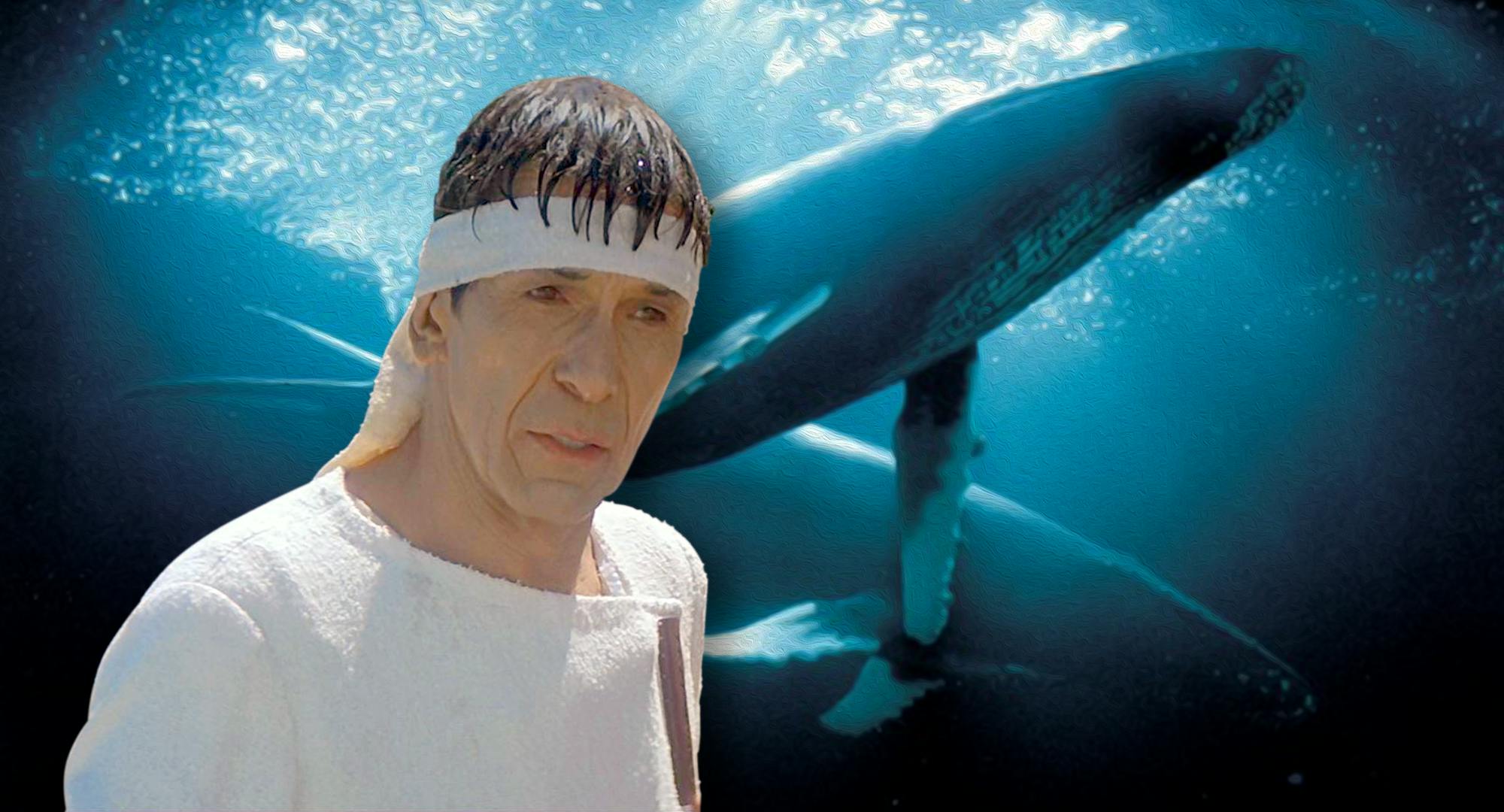
StarTrek.com
“Everybody remember where we parked,” is not exactly the kind of line you think you’re going to get in a Star Trek movie. You might also not expect to see Spock swimming underwater with a humpback whale or Kirk inventively cursing out a cab driver in 1980s San Francisco. Star Trek IV: The Voyage Home is a wild ride, but really, it’s all about those whales.
Lately, I’ve found the movie to be very comforting, a sunny kind of balm in this new time of social distancing and uncertainty. With the fiftieth anniversary of Earth Day this month, The Voyage Home ’s environmental philosophy is also particularly poignant. The message is a simple one of interconnectedness, that the extinction of one species affects every other species. There’s also a hospital chase scene and a legendary Punk on a Bus. In its humor and lightheartedness, sincerity and simplicity, Star Trek IV is the funny one, the quirky one, but also a reminder of what can be lost and the unexpected consequences along the way.
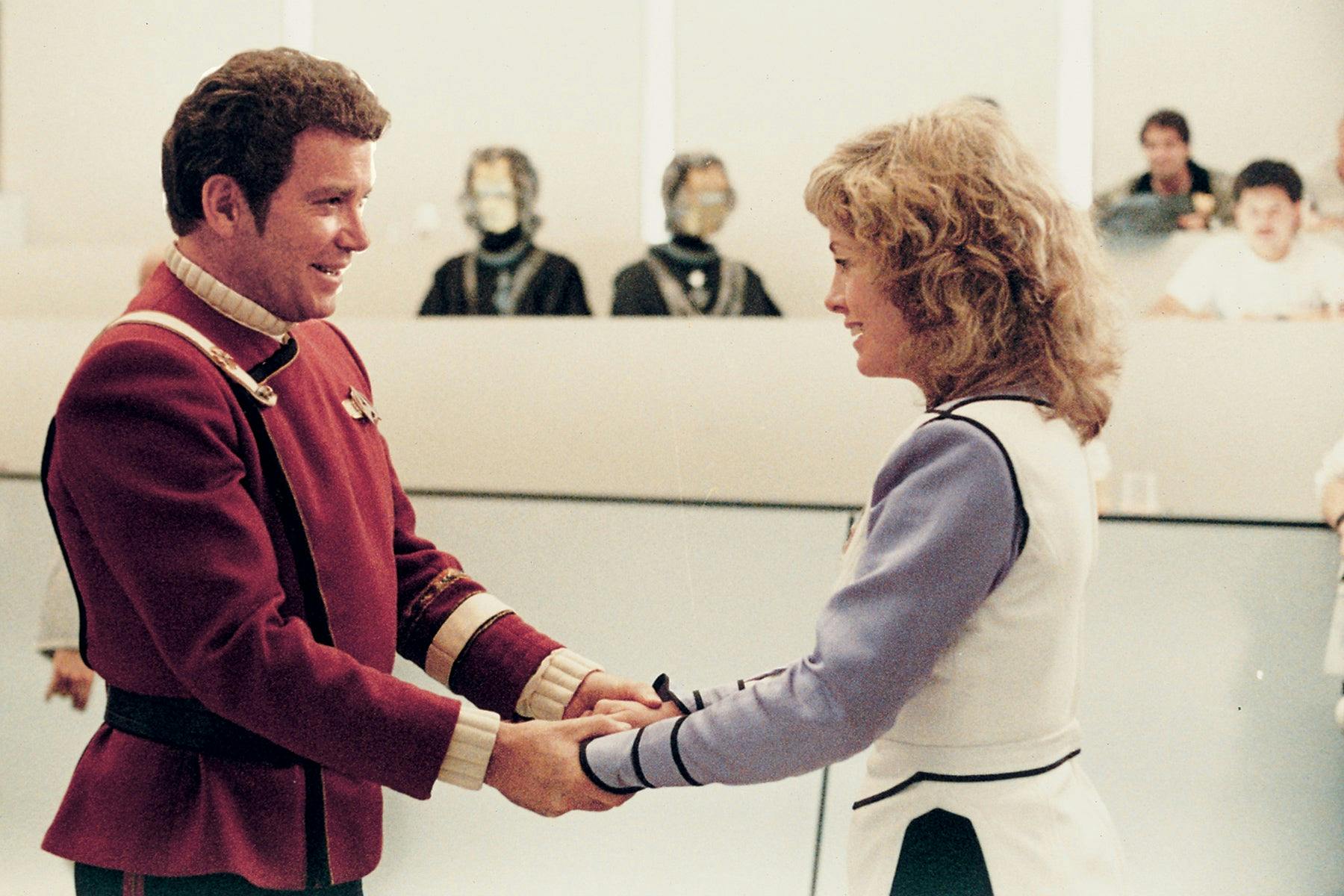
Released in 1986, The Voyage Home builds directly on the events of the previous two films in its opening, with Spock readjusting to life after being reborn on Genesis and the Enterprise crew preparing for an inglorious return to Starfleet after breaking all the rules to rescue him. Near Earth, the arrival of a mysterious probe of unknown origin wreaks havoc on Starfleet Command and the operations of the planet. On their way home in a jalopy of a Bird of Prey from Star Trek III , Kirk and company quickly piece together that the probe is trying to make contact with life forms on Earth—just not the life forms you’d expect.
The probe is trying to get in touch with humpback whales, except there are no more humpback whales on Earth in 2286. Recognizing that the giant space log isn’t going to stop until it hears some whale song, Kirk realizes that, naturally, time travel must be attempted. They will journey back to Earth of the past, before whales went extinct, and bring some back to their present time to communicate with and appease the massive space log. It’s a bonkers premise, but sublimely so in execution.
Environmentally themed movies today are still a bit of a niche category. But when Leonard Nimoy, William Shatner, and the Enterprise crew were suiting up for their fourth big-screen adventure, it had been little more than a decade since the passage of some of America’s most significant environmental legislation; things like the Clean Water Act the Endangered Species Act, and the 1970 formation of the EPA. Nimoy, pulling double duty as both director and co-star, had a strong vision for the film early on in the production process. Both he and producer Harve Bennett wanted to make what they termed a “nice” Star Trek movie, one free of villains and phaser fights. Paramount was on board, bringing Nimoy back to the directing chair for a second go-round after Star Trek III: The Search for Spock and fully investing in his environment-focused concepts for the movie.
Earth Day | Star Trek Cares for the Environment
An early story idea had not whales as the target of the probe, but the tiny snail darter — a fish roughly the length of two paper clips. It’d recently been discovered, and Bennett liked the very Star Trek -esque idea of something so small having such a big impact (as well as its potential for cost-savings in production). Humpback whales, though, were ultimately chosen. They’re grander and a better cinematic choice because of their size and elegance and distinctiveness from so many other sea creatures. They also play a critical role in the overall health of the marine ecosystem in their spot at the top of the oceanic food chain.
The vision of Nimoy and his co-creators was notable, especially compared to other studio films of the 1980s. What resulted was the both the least “Star Trek” Star Trek movie but also the most “Star Trek” Star Trek movie in terms of values and ethos. And it paid off, in Hollywood terms and for fans. The Voyage Home was the fifth-highest grossing movie of 1986 and remained the highest-grossing Star Trek film until 2009’s J.J. Abrams reboot. It earned four Academy Award nominations, including for its cinematography and score, and it remains a fan favorite, known more for its nickname than its official title.
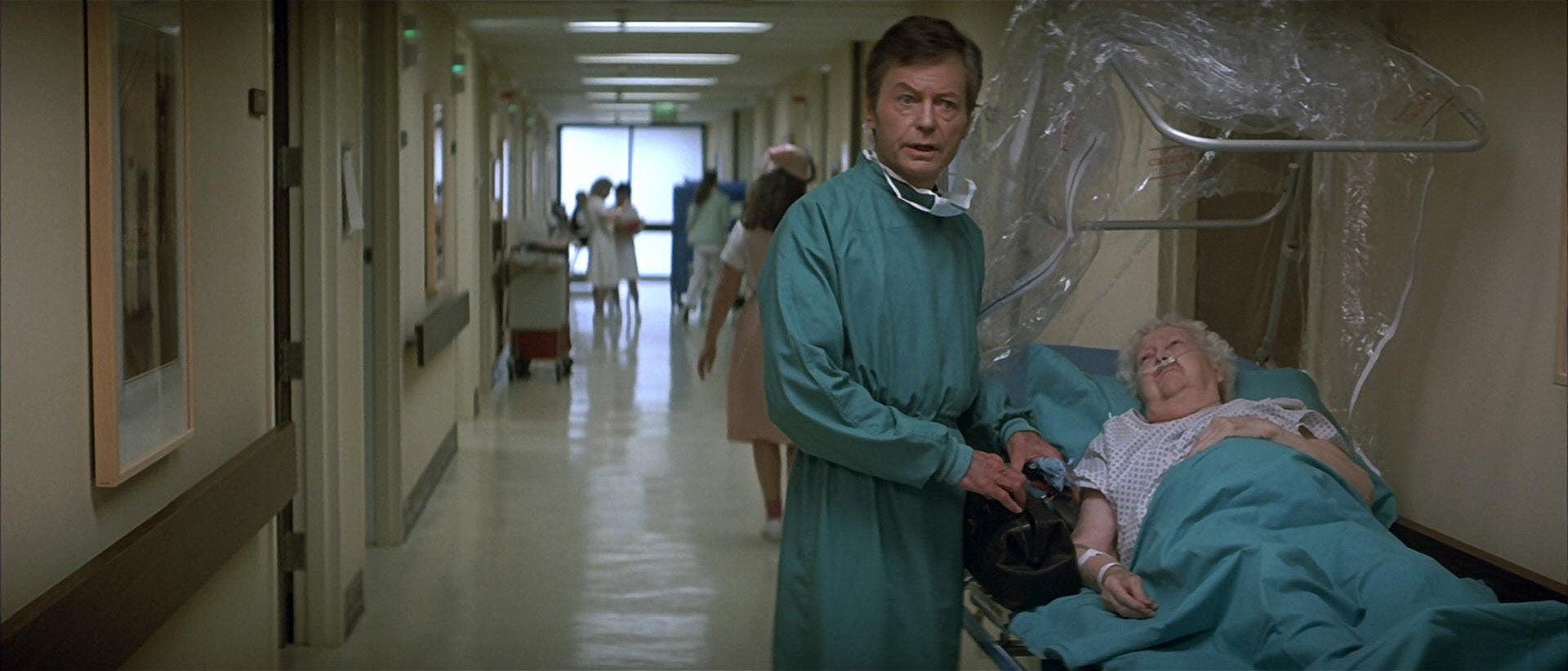
Like Nimoy wanted, there are no phaser fights and no Klingons dropping out of cloak. The cast, free from bridge duty, shine in San Francisco subplots, providing forward action for the humpback search and also some of the best comedic moments in Star Trek (“Dialysis? My god, what is this, the Dark Ages?”). Uhura and Chekhov must find nuclear “wessels” to help repair the Bird of Prey but can’t find Alameda, while Dr. McCoy and Scotty go in search of whale tank materials and navigate a less-than-chatty desktop computer. Sulu seeks out a helicopter, leaving Kirk and Spock to play tourist at the Cetacean Institute, where they find humpback expert and Kirk-skeptic Dr. Gillian Taylor and two happy humpbacks, George and Gracie. Each sequence in IV contains the essence of Star Trek — teamwork, pursuit of the greater good, forward progress.
More than 30 years after Star Trek IV, and fifty years since the first Earth Day on April 22, 1970, forward progress is still the hope of so many. Around 20 million Americans took part in the inaugural Earth Day celebration, and the landmark legislation of the mid-1970s has proven vital. For instance, ninety-nine percent of the species protected by the Endangered Species Act of 1973 have been saved from extinction in the years since the law’s passage. Still, there is much progress yet to be made, even in the area of species conservation. Despite an international ban (instituted, ironically, in 1986), pockets of commercial whaling in places like Japan and Iceland persist. There are bright spots, though, and proof of the success of long-term conservation efforts: One distinct population of humpbacks (all originally classified as endangered under the ESA) has recently been starting to thrive once again.

Star Trek IV is a delightful exploration of that kind of forward-thinking hopefulness. It revels in both its un- Star Trek -ness and its own canon, with a message that is universal and still relevant today. Like a Star Trek movie with a Klingon ship crash-landing beneath the Golden Gate Bridge and a trippy 3D exploration of time travel, this year’s Earth Day won’t look like what anybody would’ve expected. Instead of community events and large-scale gatherings, it’s going online, reimagining itself with 24 hours of digital activities. Star Trek is like that too, imagining how things might be —how they could be — and then reimagining itself again and again. Maybe humans can find a way. Maybe they have to slingshot around the sun. Maybe Kirk has to have dinner with Dr. Gillian for purely mission-related reasons.
It’s wacky and touching and funny and thematically important. The One About the Whales doesn’t fit any one mold, but it does boldy go in the hopeful direction that humans can find a way to save what we have in common above all else—life on Earth.
Catherine L. Hensley (she/her) is a freelance writer and editor. She’s the author of New York Dolls (goo.gl/WPQvMW) and thinks “double dumbass on you” is a pretty great turn of a phrase, in 1986 and today. Follow her on Twitter, @NYDollsTheNovel.
Get Updates By Email

IMAGES
COMMENTS
Star Trek is an American science fiction media franchise created by Gene Roddenberry, which began with the eponymous 1960s television series and became a worldwide pop-culture phenomenon.Since its creation, the franchise has expanded into various films, television series, video games, novels, and comic books, and it has become one of the most recognizable and highest-grossing media franchises ...
Star Trek was created by American writer and producer Gene Roddenberry and chronicles the exploits of the crew of the starship USS Enterprise, whose five-year mission is to explore space and, as stated in the title sequence, "to seek out new life and new civilizations, to boldly go where no man has gone before." The series takes place in the 23rd century, after a benign and advanced alien ...
Star Trek is a science fiction franchise comprising twelve television series, thirteen films, four companion series, numerous novels, comics, video games, reference works, podcasts, role playing games, along with thousands of collectibles. Originally, Star Trek was a product of Desilu Studios as created by Gene Roddenberry in a first draft series proposal "Star Trek is...", dated 11 March 1964 ...
Star Trek: Created by Gene Roddenberry. With Leonard Nimoy, William Shatner, DeForest Kelley, Nichelle Nichols. In the 23rd Century, Captain James T. Kirk and the crew of the U.S.S. Enterprise explore the galaxy and defend the United Federation of Planets.
Star Trek is an American science fiction television series created by Gene Roddenberry that follows the adventures of the starship USS Enterprise (NCC-1701) and its crew. It acquired the retronym of Star Trek: The Original Series (TOS) to distinguish the show within the media franchise that it began.. The show is set in the Milky Way galaxy, c. 2266-2269.
Star Trek: Discovery begins with a disastrous meeting between Starfleet and the Klingon Empire, which leads to a long, bloody war that nearly cost the Federation its soul. Centering on Commander Micheal Burnham, Discovery deals with the personal prices of war, as well as the themes of redemption and empathy. The first season dealt almost exclusively with the Klingon War, while season 2 took a ...
Star Trek: Discovery's Five-Season Mission. In the lead up to Discovery's final adventure, the cast and creatives behind the hit series reflects on their journey so far. What to Expect from The Final Season of Star Trek: Discovery. The cast details everything you need to know to get ready for the Season 5 premiere this week!
Star Trek is a behemoth of a franchise.Running over 50 years, it has had five live-action series, one animated series, several films, comics, novelizations, and an extremely obsessive fandom I ...
Star Trek: Discovery is an American science fiction television series created by Bryan Fuller and Alex Kurtzman for the streaming service CBS All Access (later rebranded as Paramount+).It is the seventh Star Trek series and debuted in 2017. The series follows the crew of the starship Discovery beginning a decade before Star Trek: The Original Series in the 23rd century.
What is Star Trek, really? In the vast universe of Star Trek, humanity is free to pursue the spirit of curiosity, equality, and the advancement of all life. The tales woven transcend the ordinary and beckon us to embark on a profound journey of exploration and enlightenment, presenting a future without racism, sexism, intolerance, poverty, or ...
The iconic series follows the crew of the starship U.S.S. Enterprise as it completes its missions in space in the 23rd century. Captain James T. Kirk -- along with science officer Spock, ship Dr. "Bones" McCoy, Ensign Pavel Chekov, communications officer Lt. Nyota Uhura, helmsman Lt. Hikaru Sulu, and chief engineer Lt. Cmdr. Montgomery "Scotty ...
1. Star Trek: Enterprise (2151-2155) Star Trek: Enterprise is the earliest entry on our list as it takes place a hundred years before the adventures of Kirk, Spock, and the rest of the crew of ...
Star Trek: Discovery: Created by Bryan Fuller, Alex Kurtzman. With Sonequa Martin-Green, Doug Jones, Anthony Rapp, Emily Coutts. Ten years before Kirk, Spock, and the Enterprise, the USS Discovery discovers new worlds and lifeforms as one Starfleet officer learns to understand all things alien.
Inside the heartbreaking conservatorship battle of a 'Star Trek' legend. Aug. 15, 2021. That "Star Trek," which originally ran from from 1966 to 1969, returned to television in the first ...
10. Star Trek 's Vulcan salute is actually a Hebrew blessing. Frazer Harrison, Getty Images. Leonard Nimoy did not create the Vulcan salute that means "Live Long and Prosper" out of thin air for ...
When Star Trek debuted on September 6, 1966, it was a relatively low-budget TV series with only lukewarm network support. It took two pilot episodes before the series was picked up by NBC, only to ...
Star Trek: Directed by J.J. Abrams. With Chris Pine, Zachary Quinto, Leonard Nimoy, Eric Bana. The brash James T. Kirk tries to live up to his father's legacy with Mr. Spock keeping him in check as a vengeful Romulan from the future creates black holes to destroy the Federation one planet at a time.
The trail-blazing sci-fi series debuted 50 years ago and has taken countless fans where none had gone before. Interviews by Edward Gross and Mark A. Altman. Helmo. It was the most wildly ...
TrekMovie.com is the source for Star Trek news and information, covering the latest updates on movies, TV shows, books, comics, merchandise, and more. Whether you are a fan of Picard, Riker, Seven ...
Welcome to the Official Star Trek YouTube Channel!
The Original Series logo. Star Trek is an American media franchise based on the science fiction television series created by Gene Roddenberry.The first television series, simply called Star Trek and now referred to as The Original Series, debuted in 1966 and aired for three seasons on NBC.The Star Trek canon includes eight live-action television series, three animated series and one short-form ...
The franchise experienced some promising signs of life in March 2024 when The Flight Attendant screenwriter Steve Yockey was enlisted by Bad Robot and Paramount Pictures to write a new Star Trek 4 ...
In addition to our beloved Original Series cast members, there were other familiar faces in the cast that popped up more than once in the Star Trek franchise, including two Klingon Chancellors.. David Warner, who played St. John Talbot in The Final Frontier, would play both Chancellor Gorkon in Star Trek VI: The Undiscovered Country, and Gul Madred, the Cardassian who tortured Picard in TNG ...
About Star Trek. The iconic series "Star Trek" follows the crew of the starship USS Enterprise as it completes its missions in space in the 23rd century. Captain James T. Kirk -- along with half- human/half-Vulcan science officer Spock, ship Dr. "Bones" McCoy, Ensign Pavel Chekov, communications officer Lt. Nyota Uhura, helmsman Lt. Hikaru Sulu ...
Latest; Why 'Star Trek: Discovery' Built Season 5 Around a Classic Episode From a Legacy Series 3 days ago 'Star Trek: Discovery' Star Sonequa Martin-Green on the Show's Unexpected Final ...
Season 5 of "Star Trek: Discovery" brings back new and old faces along with recurring guest stars. Cast members include: Sonequa Martin-Green as Captain Michael Burnham. Doug Jones as Saru ...
The original Star Trek television series turned 50 this year; the first episode premiered on the Sept. 6, 1966. The original series lasted three short seasons, but found a much wider audience in ...
Paramount+ is making their own Star Trek movies, with the recently-wrapped Star Trek: Section 31 awaiting a release date. Starring Academy Award-winner Michelle Yeoh, Section 31 is the first made-for-streaming Star Trek movie, and it is reportedly set during Star Trek's "lost era" with connections to Star Trek: The Next Generation. Section 31 could get a sequel if successful, and the Star Trek ...
The next theatrical Star Trek movie is a prequel to 2009's reboot. The next theatrically-released Star Trek movie is set to begin filming this fall, with plans to debut in 2025. Paramount Pictures ...
Star Trek IV is a delightful exploration of that kind of forward-thinking hopefulness. It revels in both its un-Star Trek-ness and its own canon, with a message that is universal and still relevant today.Like a Star Trek movie with a Klingon ship crash-landing beneath the Golden Gate Bridge and a trippy 3D exploration of time travel, this year's Earth Day won't look like what anybody would ...